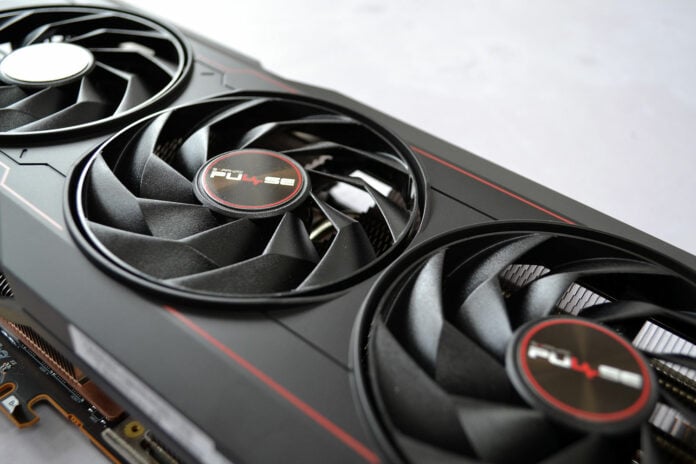Hands up if you remember becoming bemused and irritated at PC graphics card pricing during the pandemic years. At the peak of lunacy, exacerbated by limited stock and insatiable demand created through cryptomining, GPUs were changing hands for twice the recommended fee. Times have changed considerably since then, for the better, and card manufacturers now have to work much harder to entice would-be buyers into their fold.
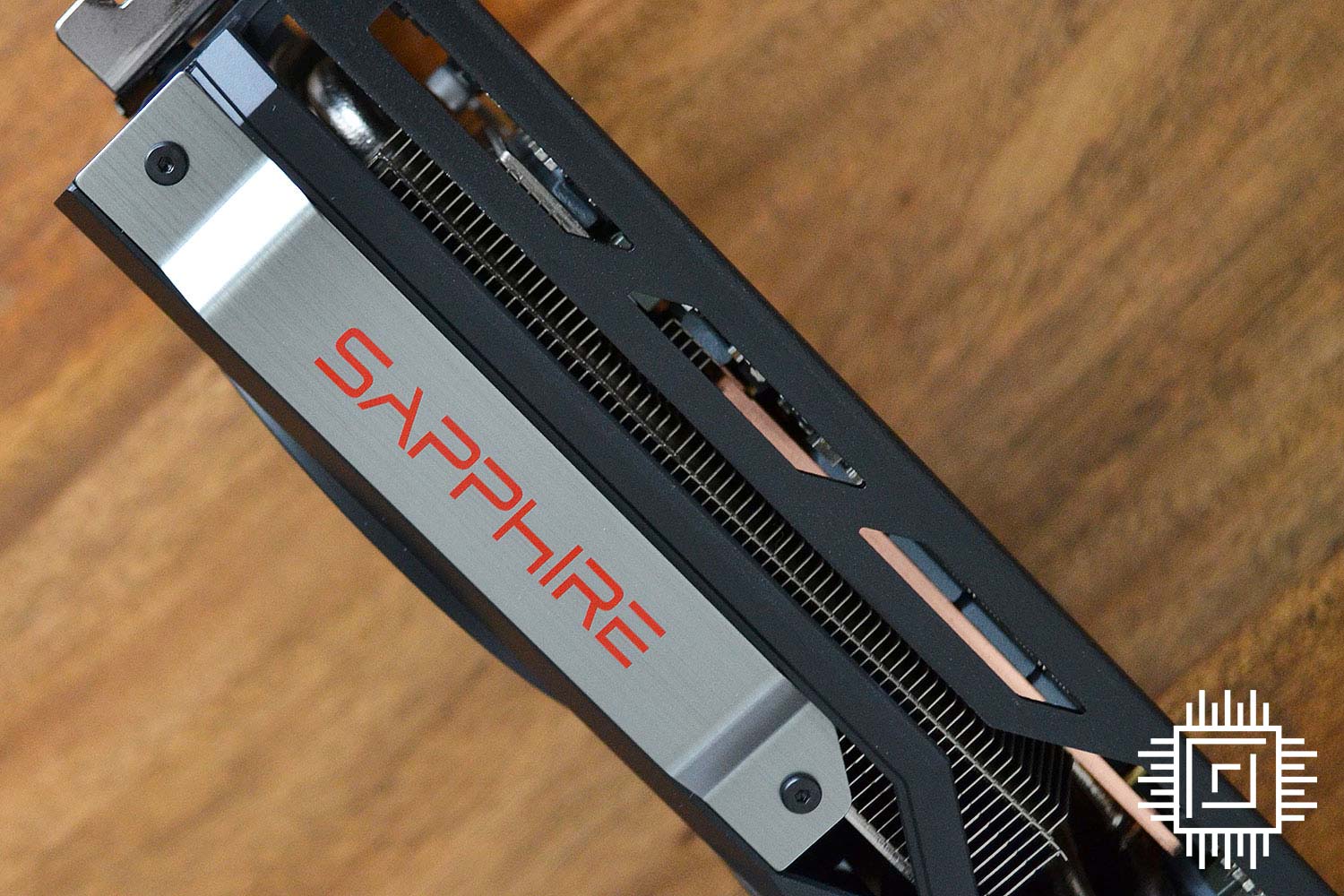

Sapphire Radeon RX 7900 XT Pulse
£850 / $895
Pros
- 20GB framebuffer
- Cool and quiet
- Stealthy looks
- Overclocks well
- Standard cabling
Cons
- Ray tracing not great
Club386 may earn an affiliate commission when you purchase products through links on our site.
How we test and review products.
There’s no glaringly bad choice when it comes to the best graphics cards. AMD’s Radeon RX 7900 XTX and 7900 XT are fine examples of 4K-capable solutions, and partners have since improved the decent MBA boards with aftermarket solutions of their own. The latest RDNA 3 GPUs bring plenty of potential to the table, so we encourage readers to spend a few moments familiarising themselves with the potent underlying architecture.
Sapphire acutely understands the nominal $100 difference between XT and XTX leaves little room for manoeuvre. This is why the stripped-down Pulse is put forward as the preferred solution for those on, shall we say, relative budgets.
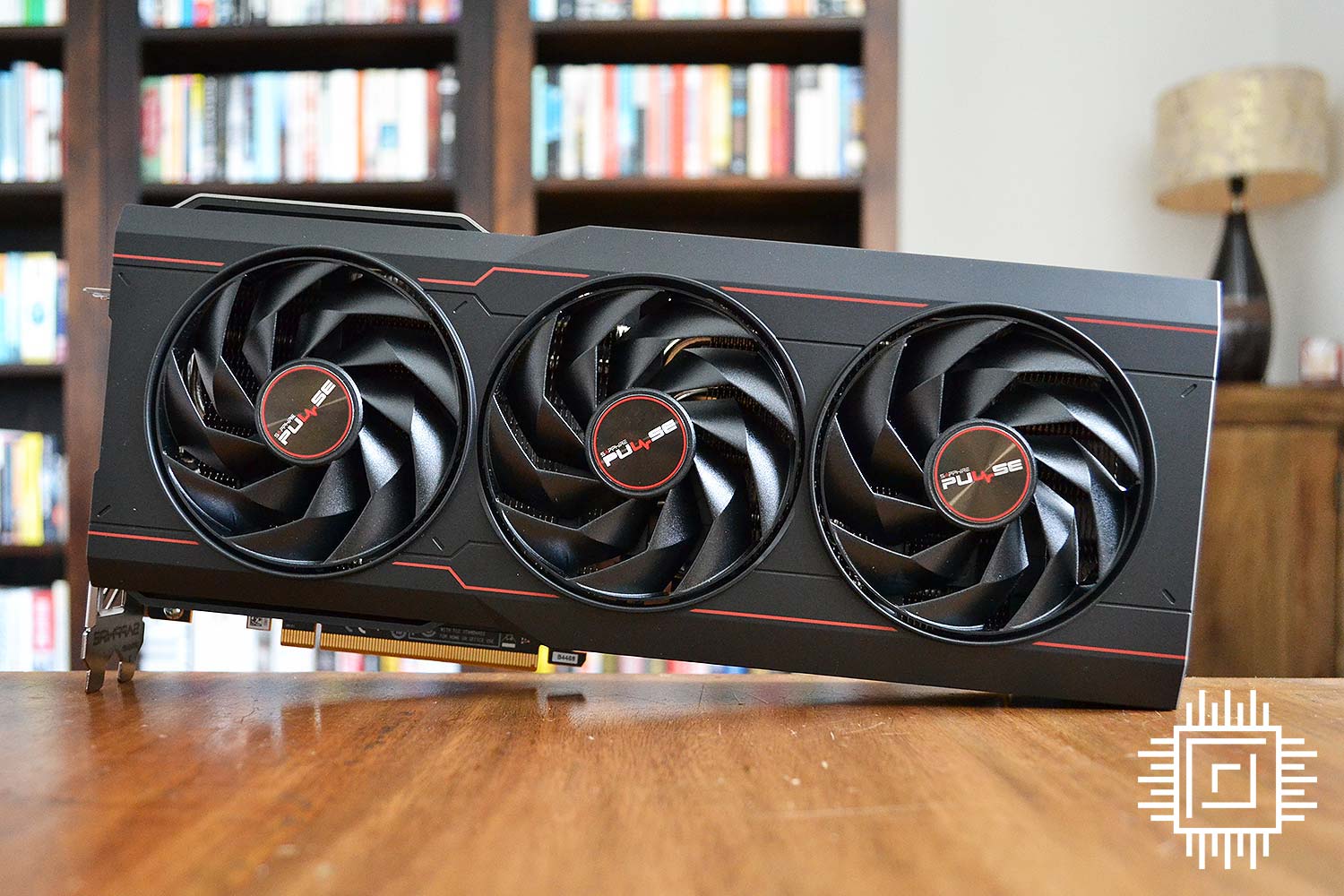
Previously listed at £900, increasing competition now makes Pulse available for £850, which is the same outlay required for a decent GeForce RTX 4070 Ti. Interesting.
Compared to gargantuan efforts witnessed recently, Pulse RX 7900 XT is a successful exercise in moderation. Measuring 313mm long, 134mm tall and 53mm thick, Sapphire refers to it as a 2.7-slot offering, but forget about that and prepare to leave at least three slots. Appreciating how modern motherboards are built, we have absolutely no problem should Sapphire choose to go wider. More the better, we say.
The stealthy look is actually enhanced by a distinct lack of RGB lighting, so feel free to go elsewhere if garish illumination is important. Pulse’s aesthetic matches up well with a wide range of motherboards, offering an understated menace without being showy. We’re fans.
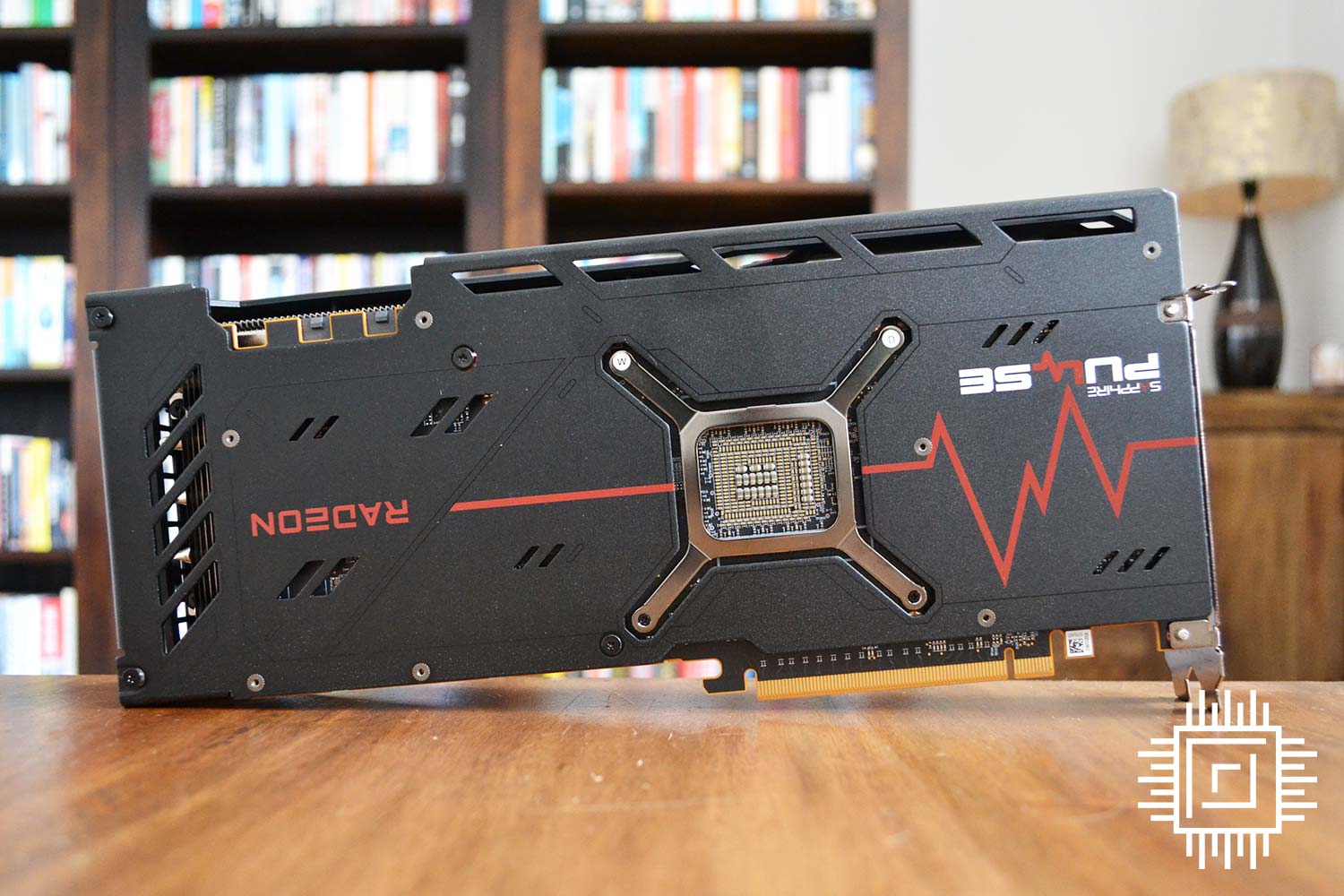
Speaking of which, Sapphire employs a trio of 90mm ball-bearing spinners that, unlike the Nitro+ version, are not removable. What they do well, however, is transition smoothly between off and on, which is appreciated if you run quiet systems like us.
Plumbed with a peak 331W of board power, Sapphire takes the opportunity of increasing GPU boost speed from an AMD reference 2,400MHz to 2,450MHz here. Not a huge uptick, granted, and users wanting more from second-rung XT can opt for the dearer Nitro+ version (£950) that duly increases frequency wick to 2,560MHz.
Pulse’s raison d’etre is in offering a real alternative to the reference card. Knowing AMD has upped the game with the MBA design, Sapphire also adopts a full-width metal backplate that matches overall design cues. Build quality remains first class. Being picky, we’d rather not see the backside of the PCB / GPU at all.
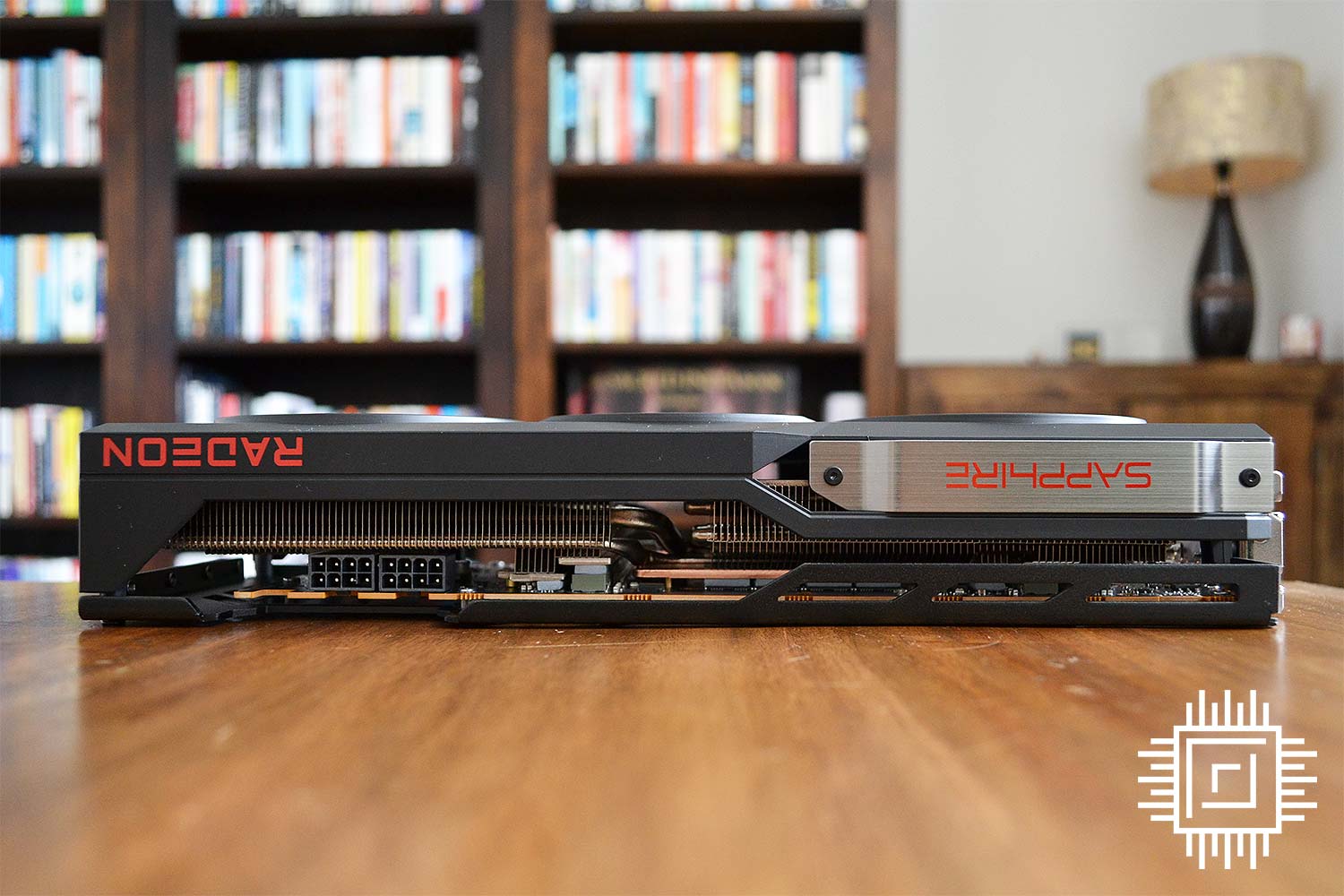
The silver Sapphire badge is another nice touch, though do remember it features no backlighting. AMD has so far refrained from adopting the 12VHPWR connector for its cards; partners have followed suit. A couple of regular 8-pin means the card has up to 375W of potential power once the PCIe slot is taken into account, which is more than enough for some exploratory overclocking.
Tipping the scales at 1,419g with Sapphire providing a support bracket, an open-sided design reveals the hot-running components are equipped with robust heatsinks. In addition, the rear backplate is not merely decorative or for structural rigidity; rather, there are various pads that transfer heat away to it.
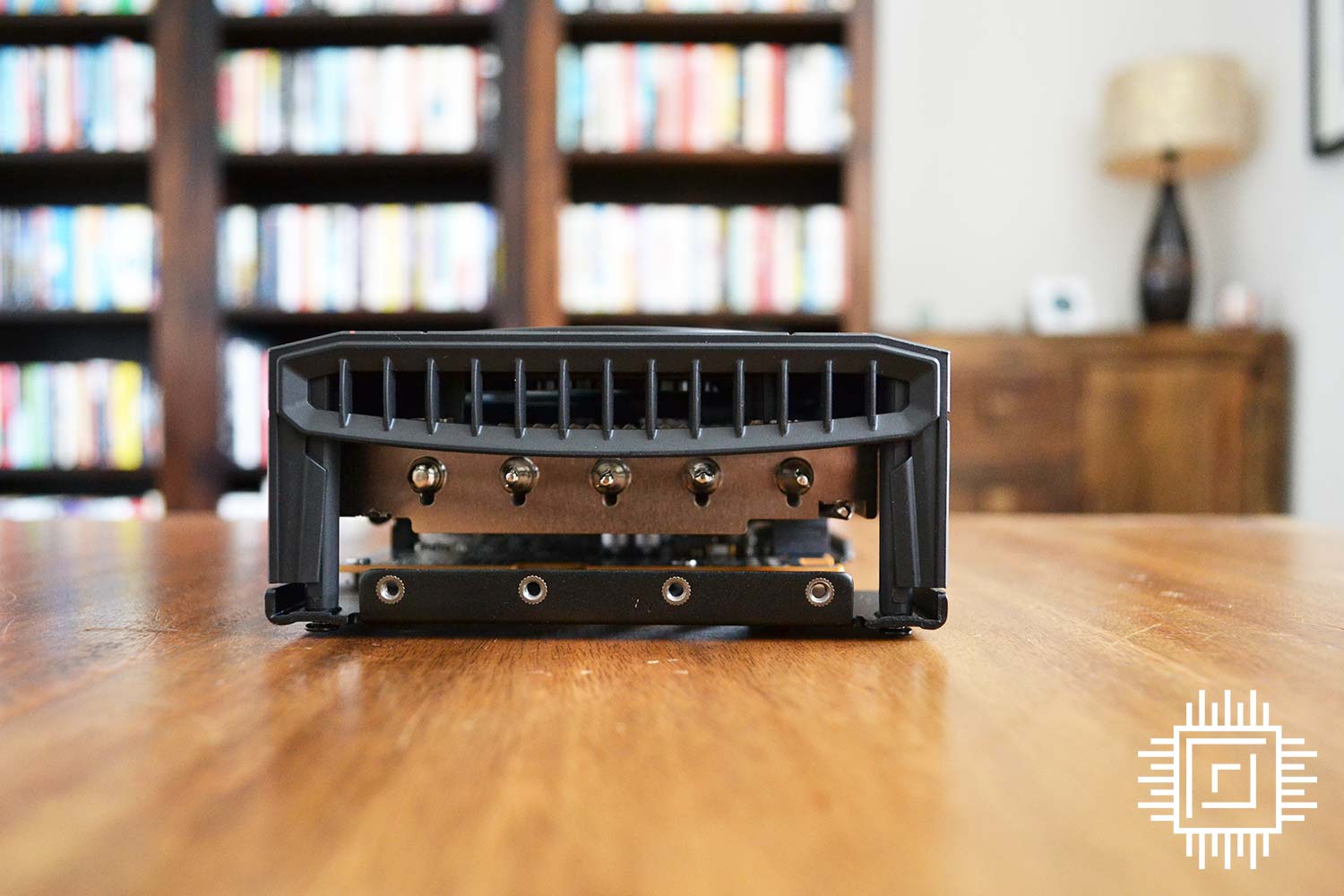
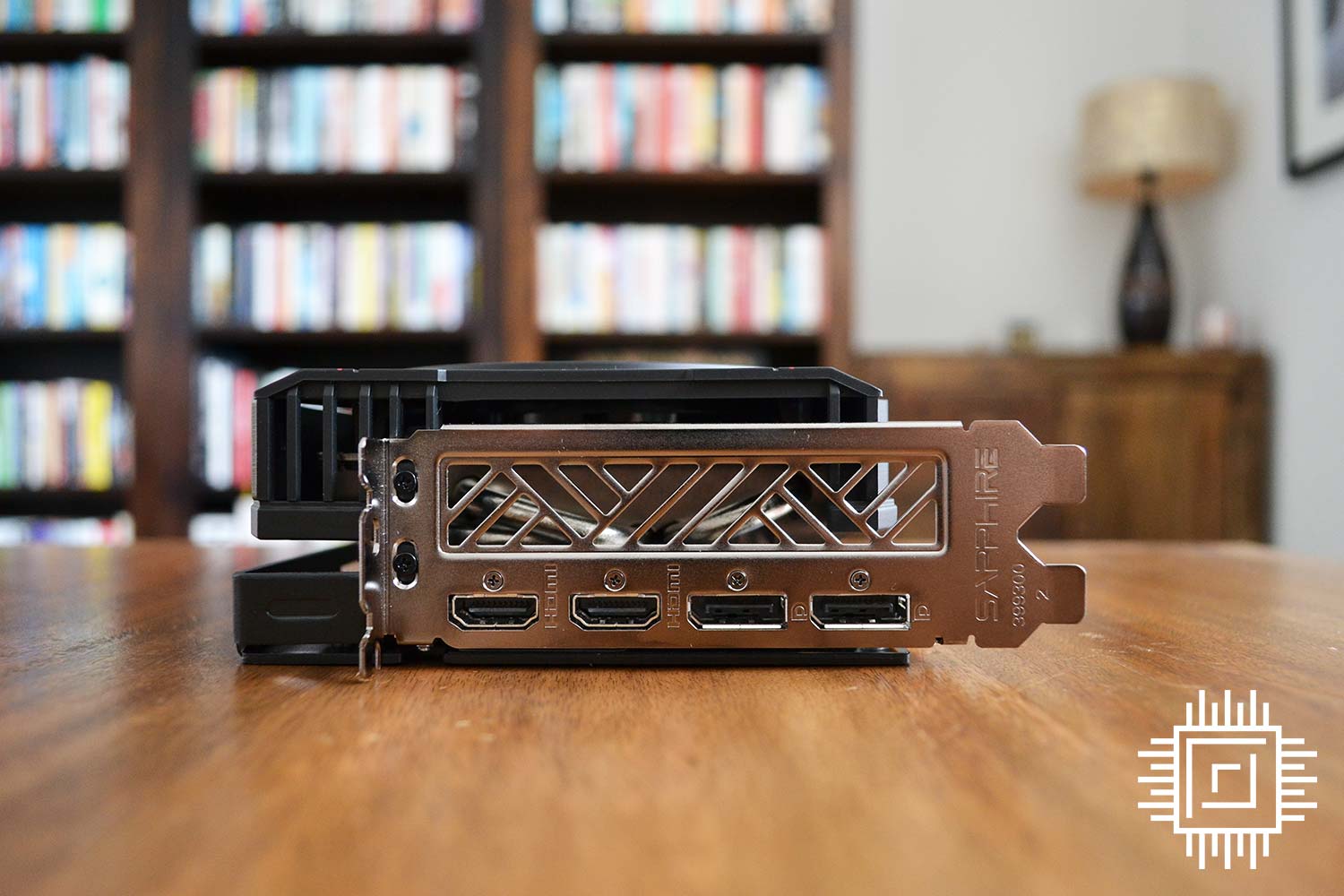
Five heatpipes are plenty powerful enough to tame the Navi 31 GPU residing underneath, and Sapphire follows form by keeping the 20GB of memory operating at a standard 20Gbps. Truth be told, very few manufacturers indulge in out-the-box VRAM overclocking as qualifying modules at higher speeds is an onerous, time-consuming task.
We’d award more style points if the I/O bracket was in a matching black; the card is begging for it. While we’re at it, having an enclosed front section would look nice, though being fair, you barely see it when in any reasonable chassis.
Sapphire’s outputs are different to the reference board because it swaps out the barely used Type-C USB for another HDMI 2.1a. Able to drive four monitors from one card, the equal split between DisplayPort and HDMI makes sense.
Performance
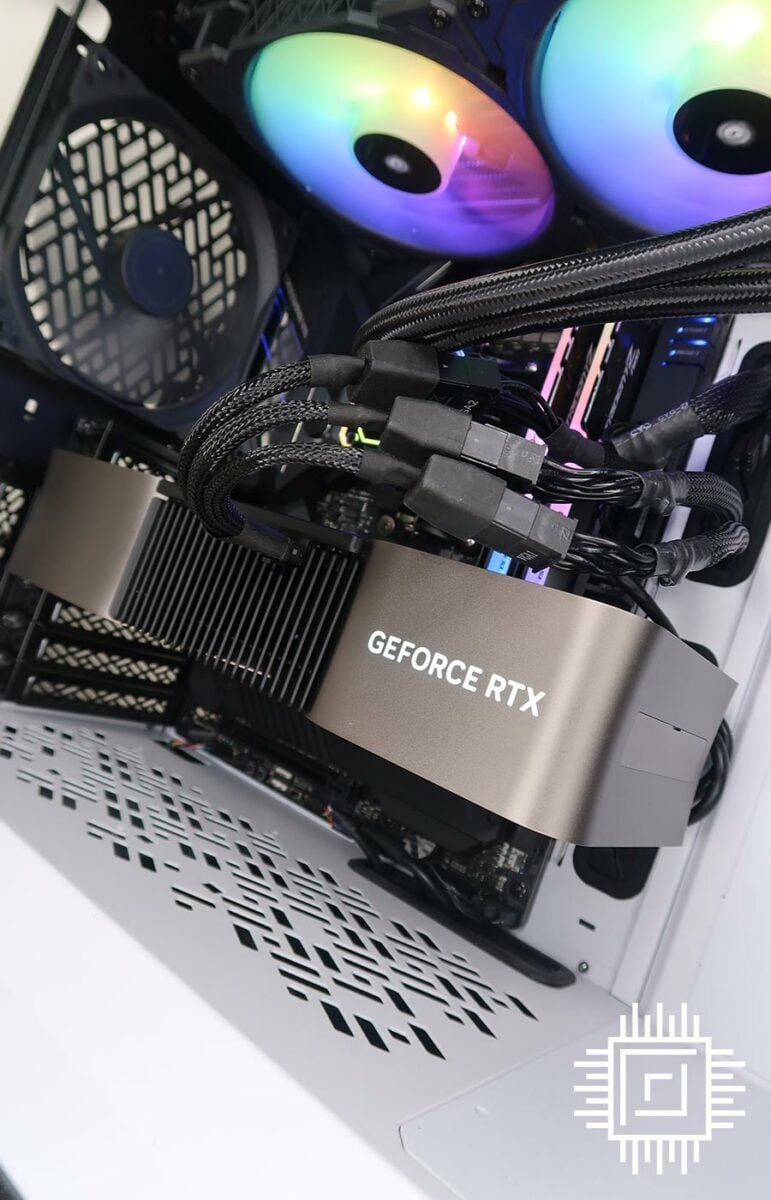
Our 5950X Test PCs
Club386 carefully chooses each component in a test bench to best suit the review at hand. When you view our benchmarks, you’re not just getting an opinion, but the results of rigorous testing carried out using hardware we trust.
Shop Club386 test platform components:
CPU: AMD Ryzen 9 5950X
Motherboard: Asus ROG X570 Crosshair VIII Formula
Cooler: Corsair Hydro Series H150i Pro RGB
Memory: 32GB G.Skill Trident Z Neo DDR4
Storage: 2TB Corsair MP600 SSD
PSU: be quiet! Straight Power 11 Platinum 1300W
Chassis: Fractal Design Define 7 Clear TG
Our trusty test platforms have been working overtime these past few months, and though the PCIe slot is starting to look worse for wear, the twin AM4 rigs haven’t skipped a beat. Tested with the latest 23.3.2 drivers, let’s cut to the chase.
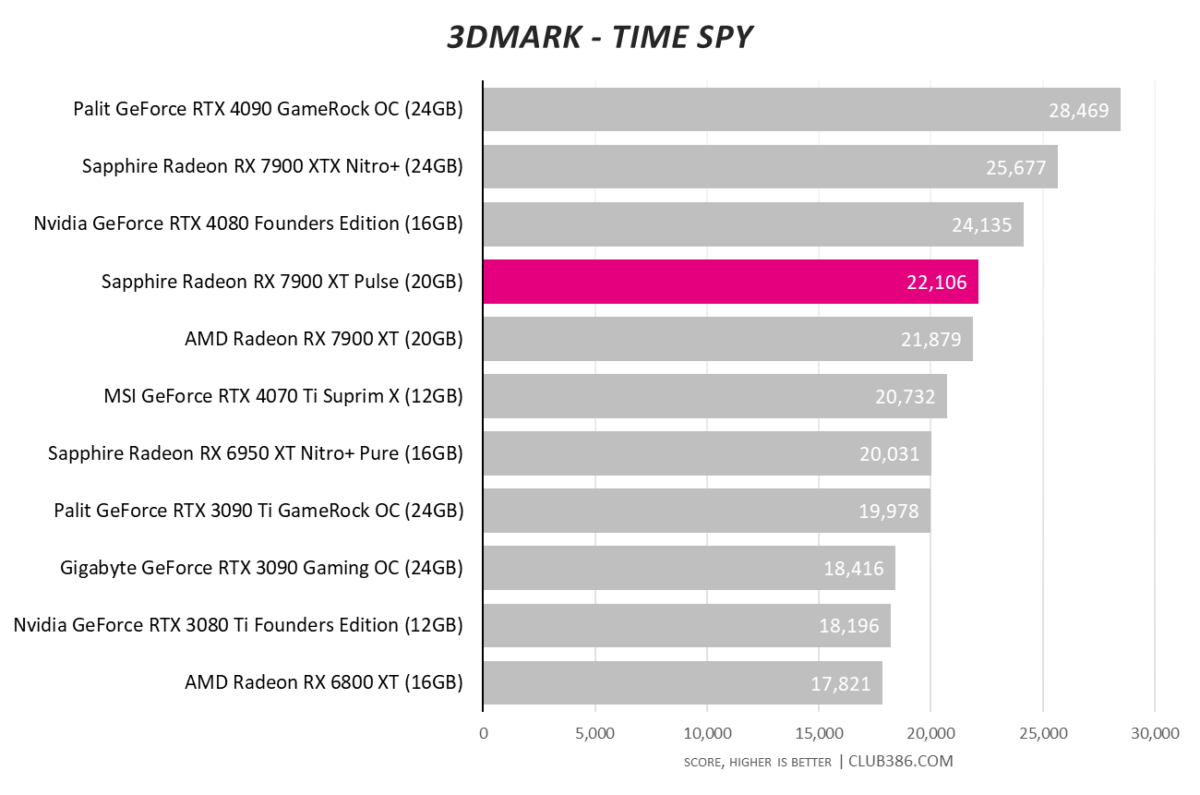
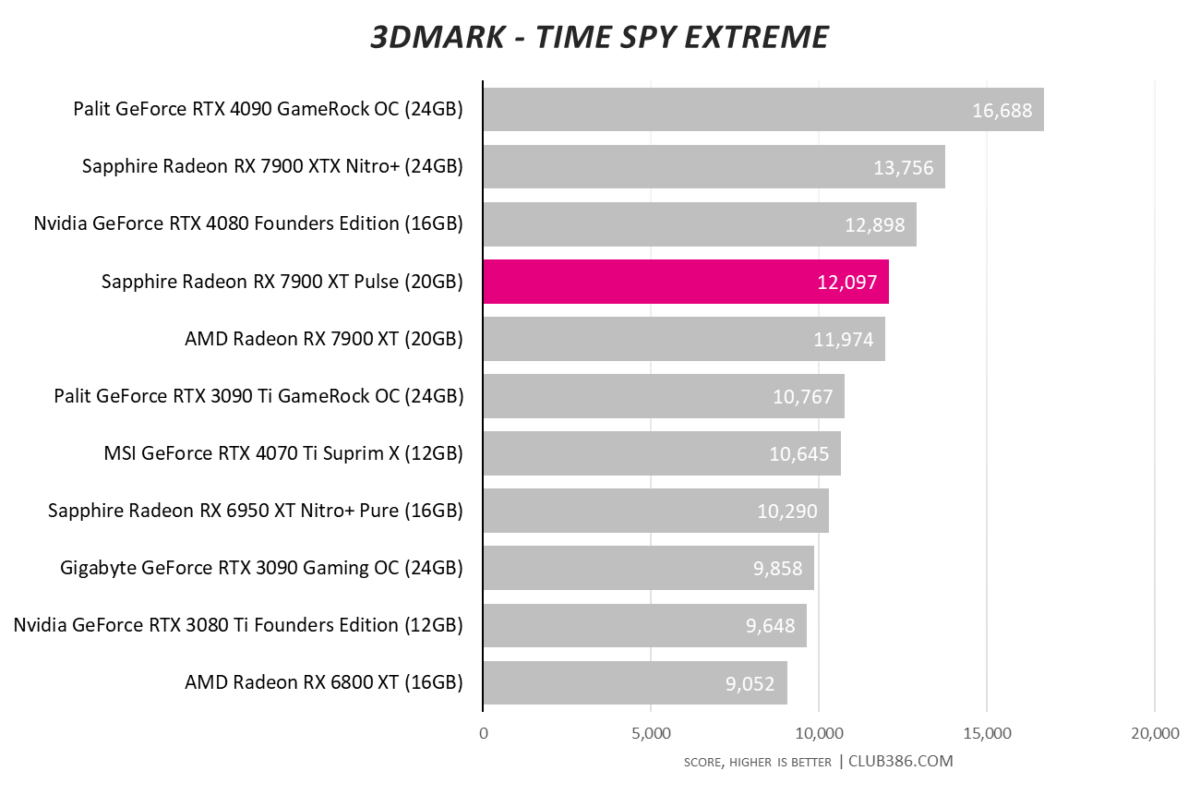
It used to be the case that select few cards broke the 10k Extreme barrier. Now that’s a commonplace occurrence for premium GPUs. Sapphire says forget 10k, have some 12k instead.
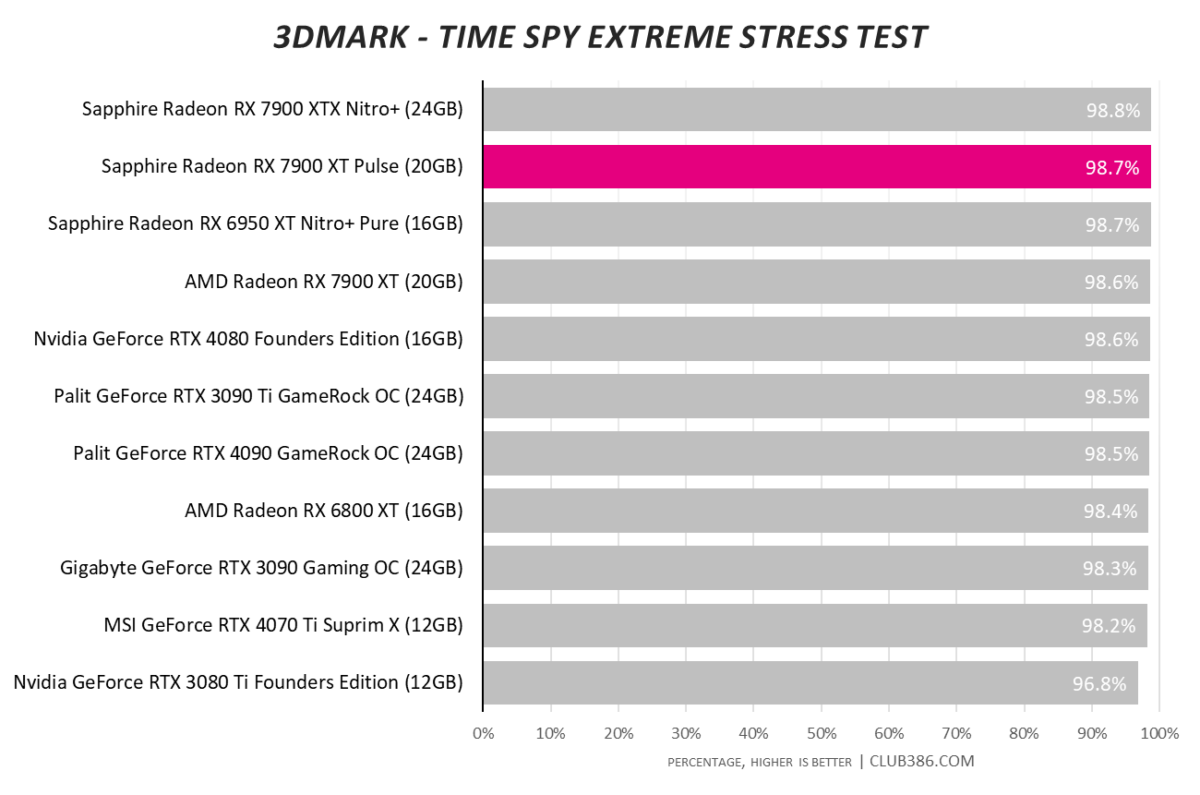
Aftermarket coolers tend to be better than MBA / Founders Edition designs because they prioritise function over form. Pulse’s heatsink isn’t the largest we’ve seen – far from it, actually – but it does a sterling job of keeping great run-to-run consistency. Lovely.
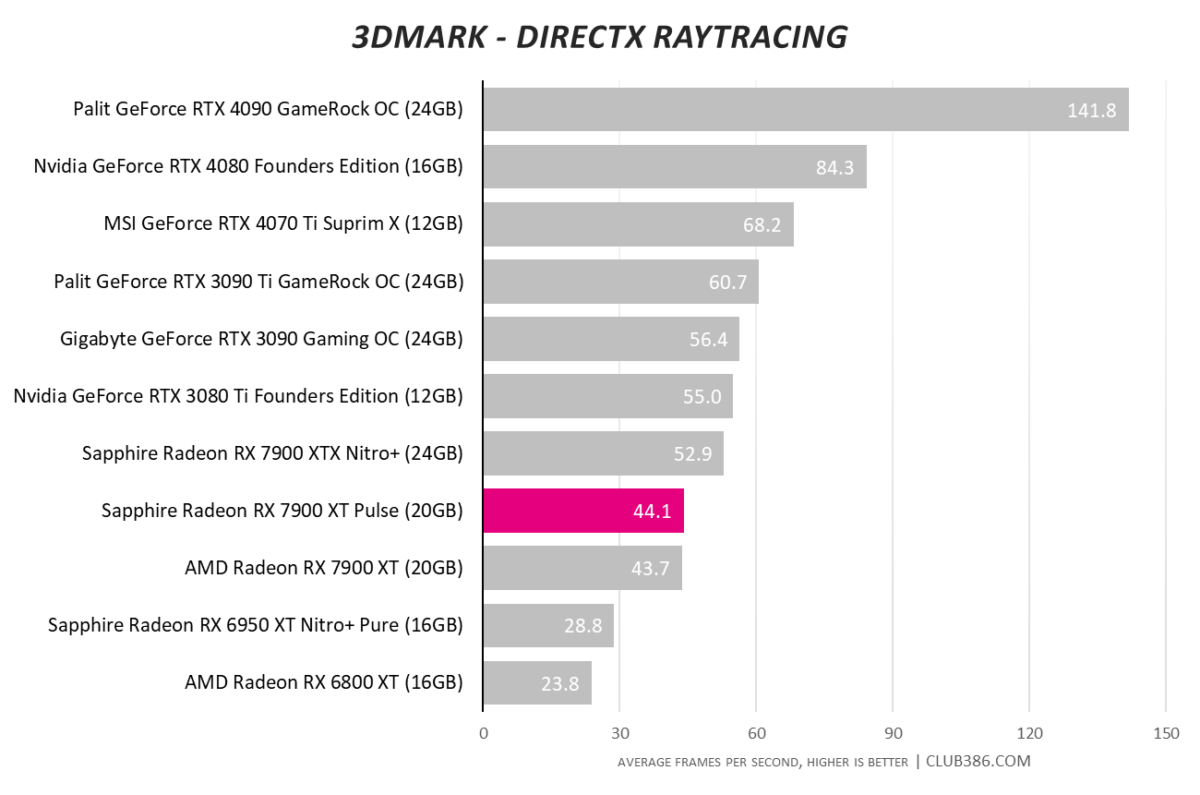
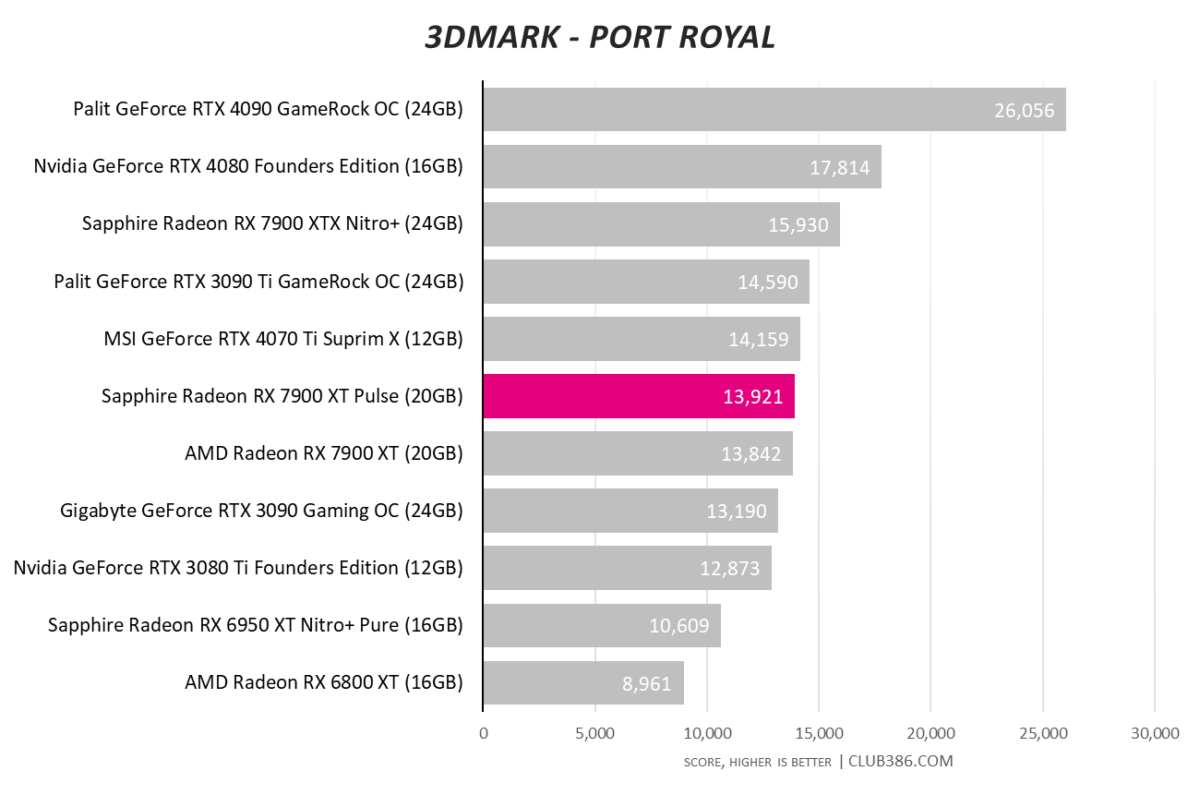
Third-party manufacturers can only do so much to improve the base GPUs. A better cooler here, a slight overclock there, but it’s difficult to move on up the charts.
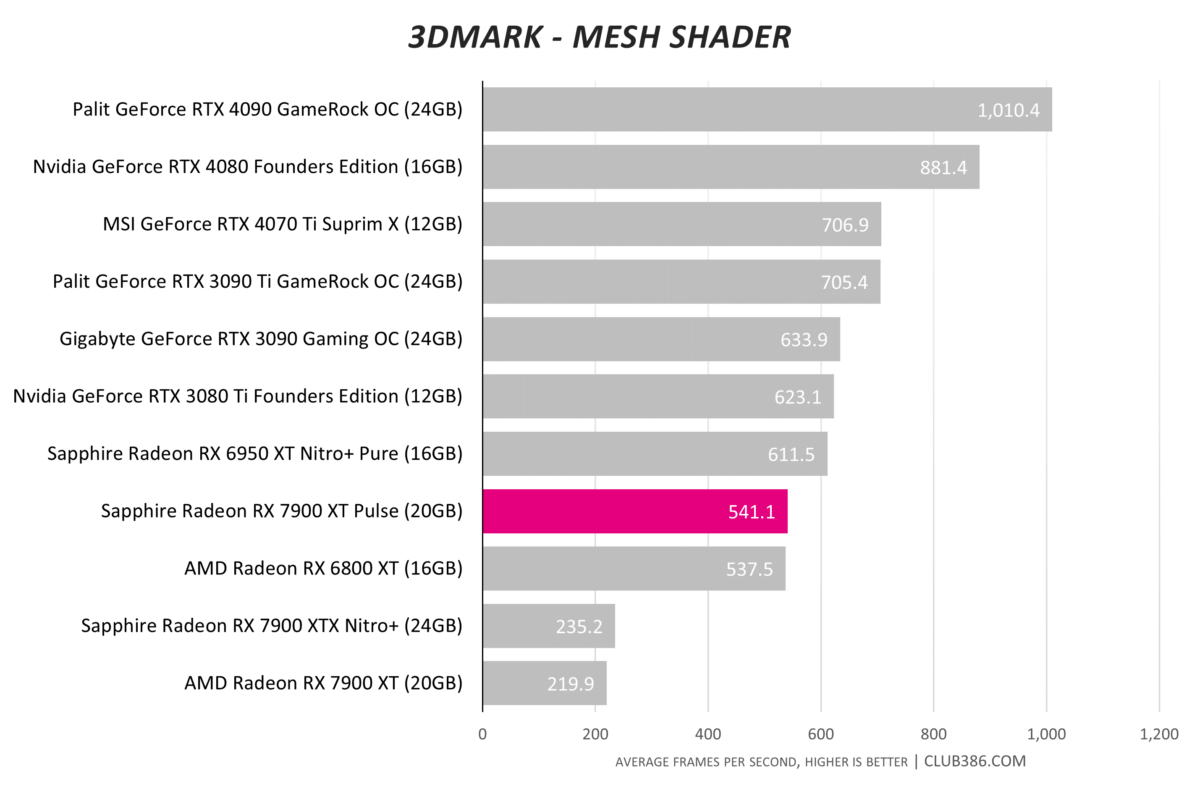
Here’s something interesting. Our launch-day review suggested something was awry with the mesh shader implementation, or that Futuremark simply didn’t recognise RDNA 3’s chops.
The latest test suggests AMD has reworked the driver for better performance, as Sapphire’s card, ostensibly the same as the reference MBA board, is over twice as fast.
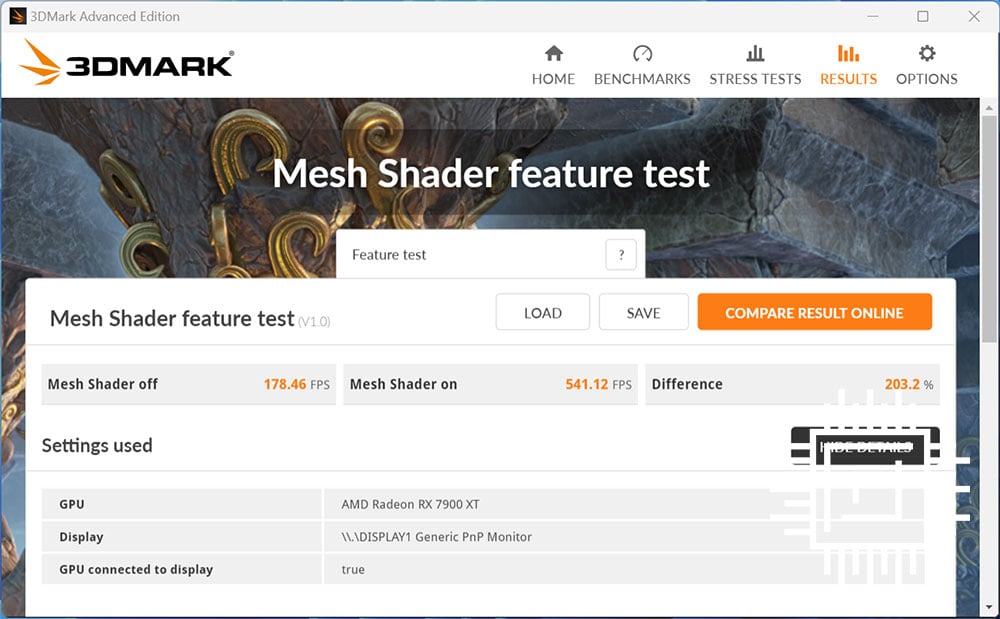
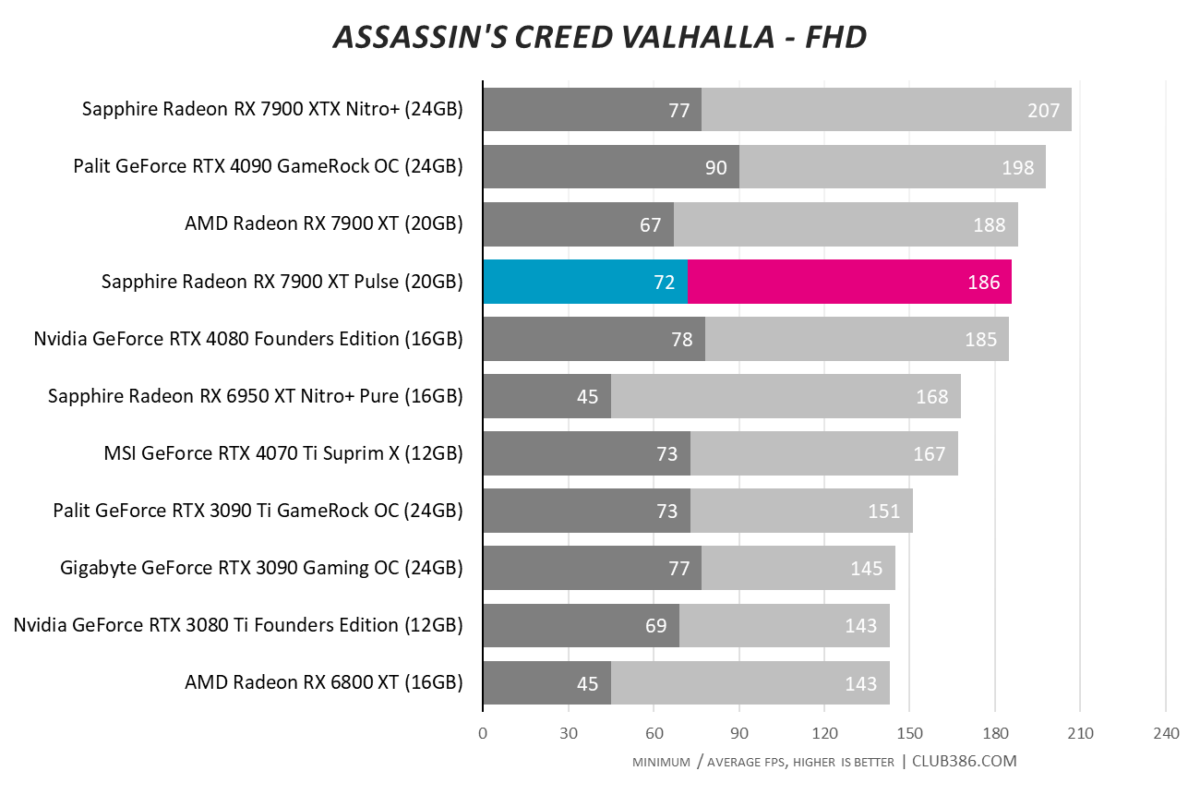
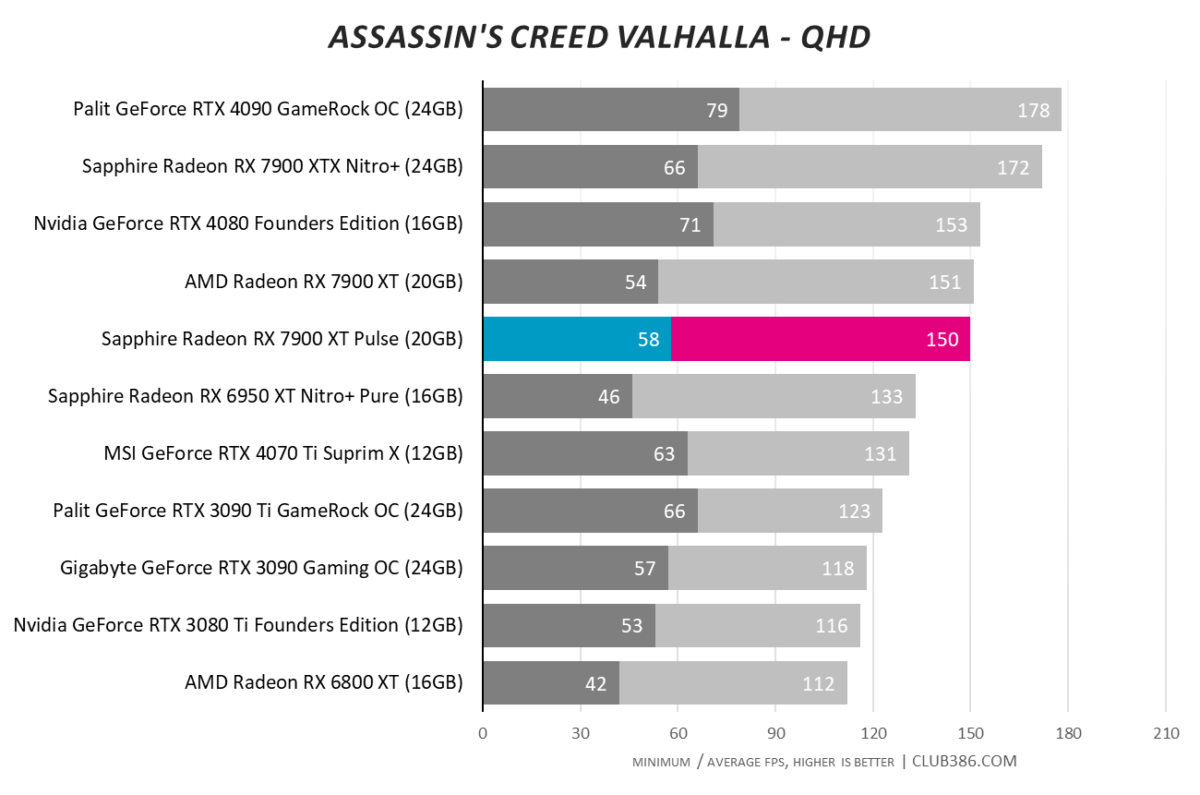
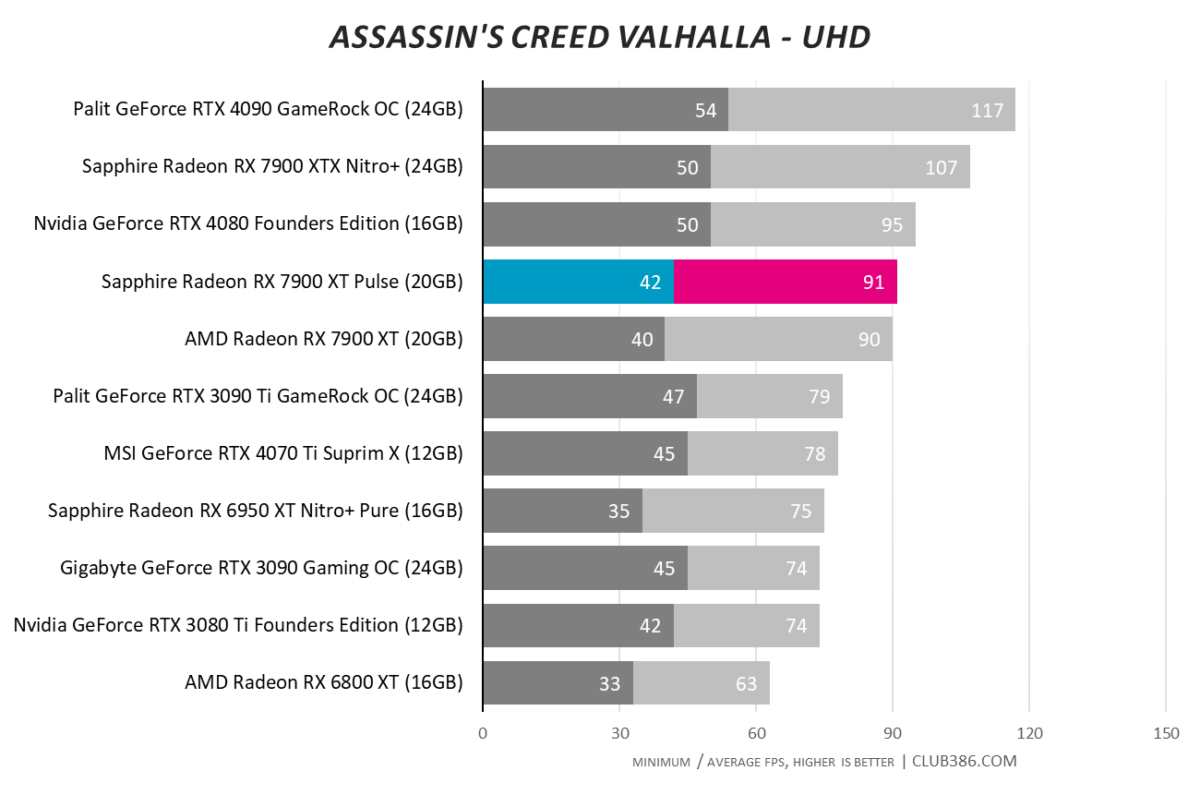
AMD has always been strong in this title. Looking over to the competition, RX 7900 XT is a better pure rasterisation bet than price-comparable RTX 4070 Ti.
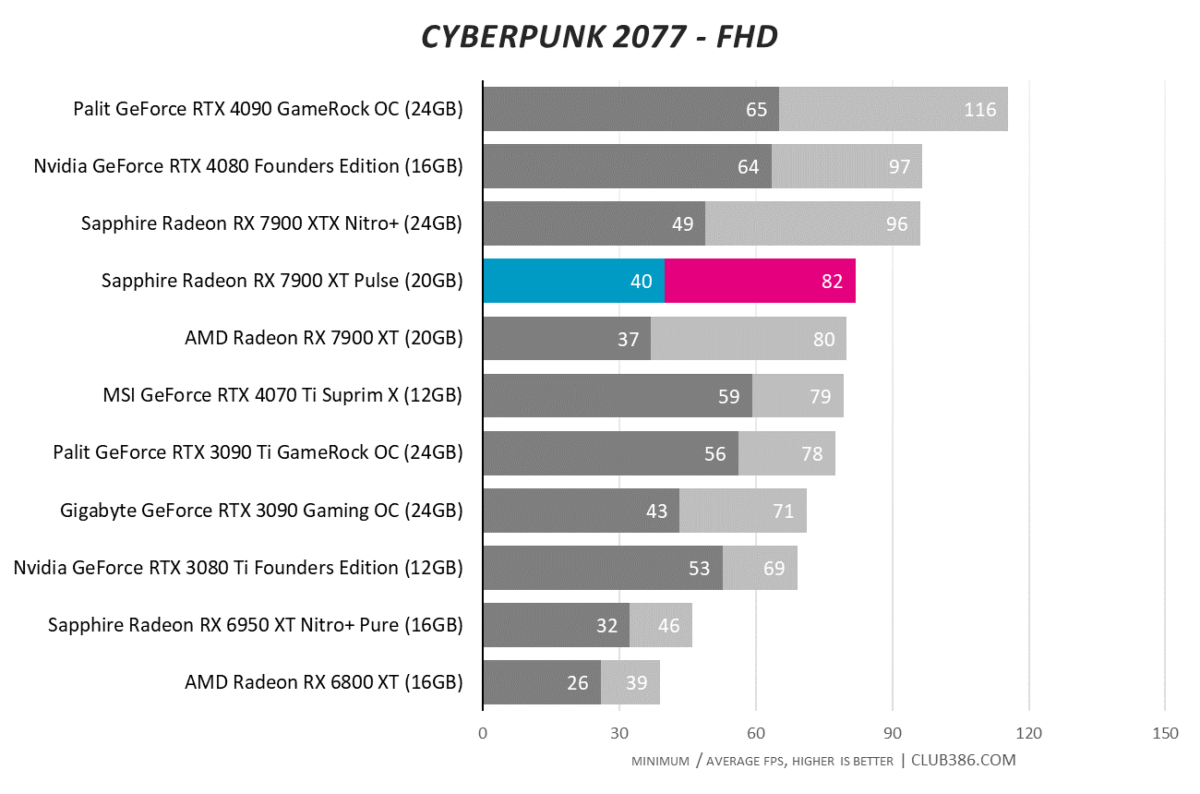
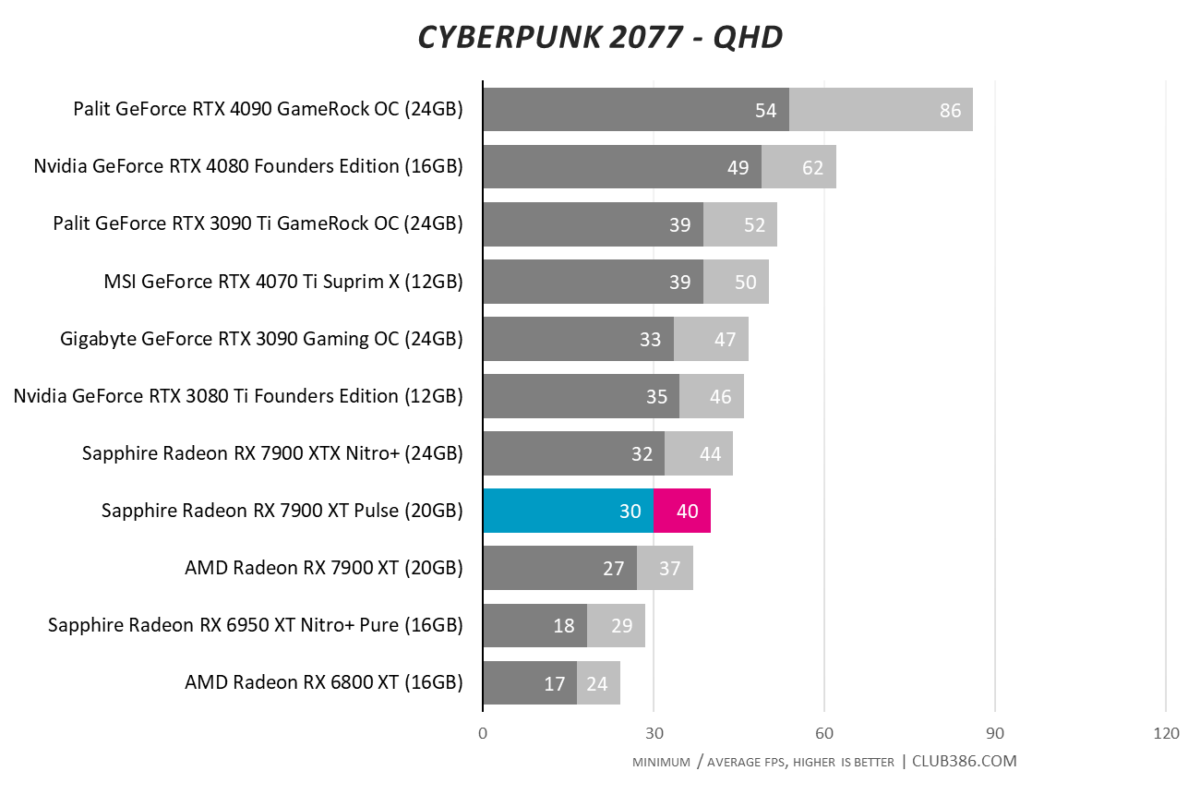
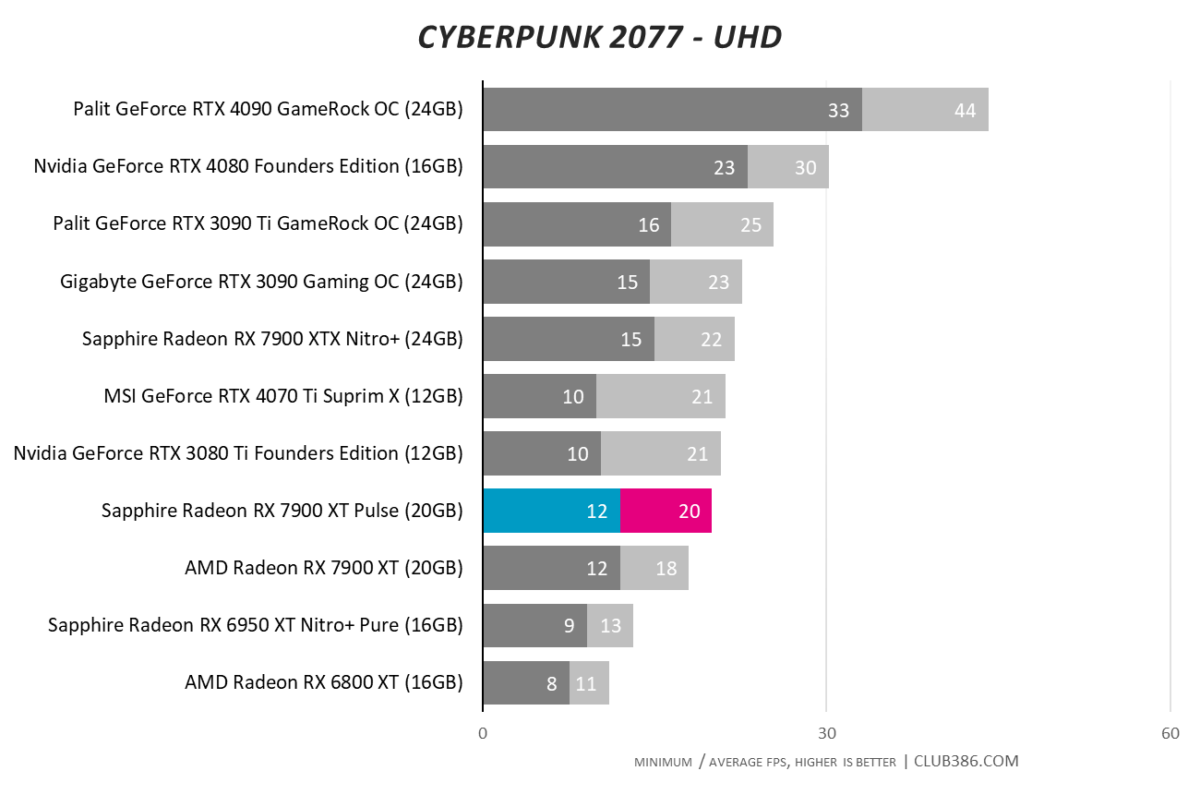
A slight improvement over the base design, this is one title where framerate-boosting technologies help.
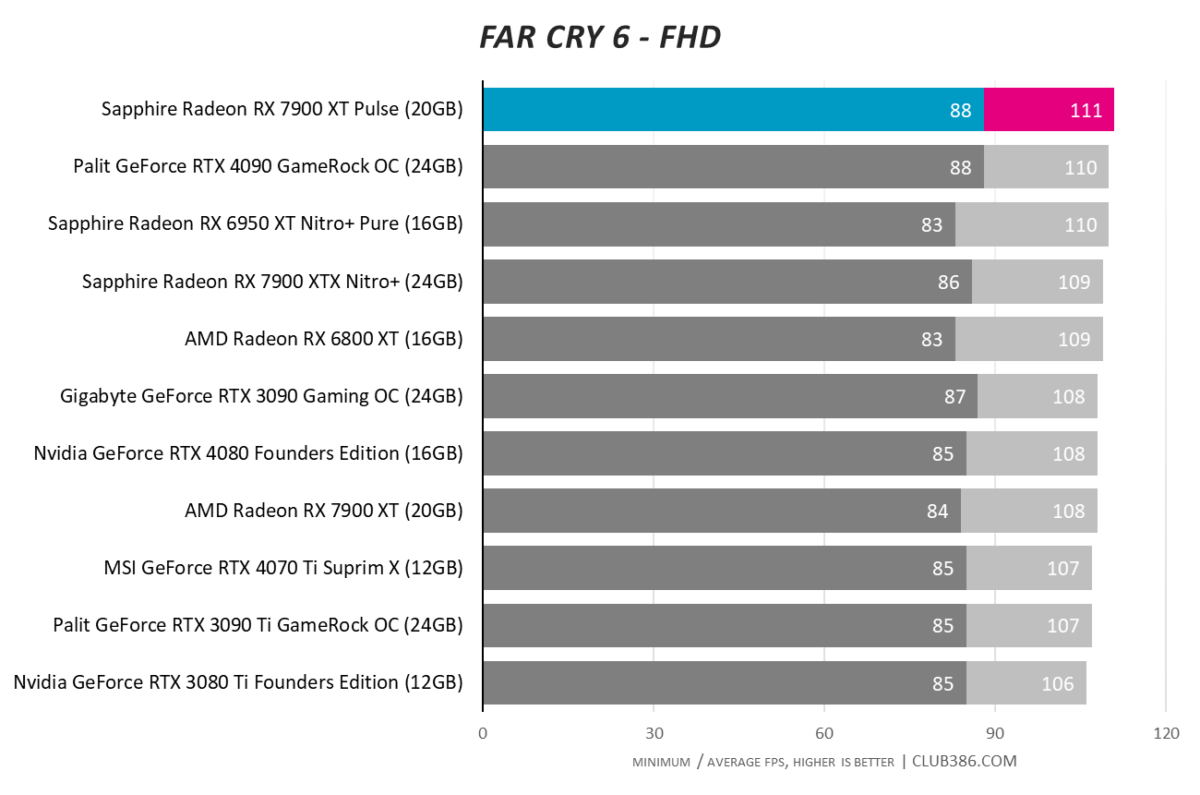
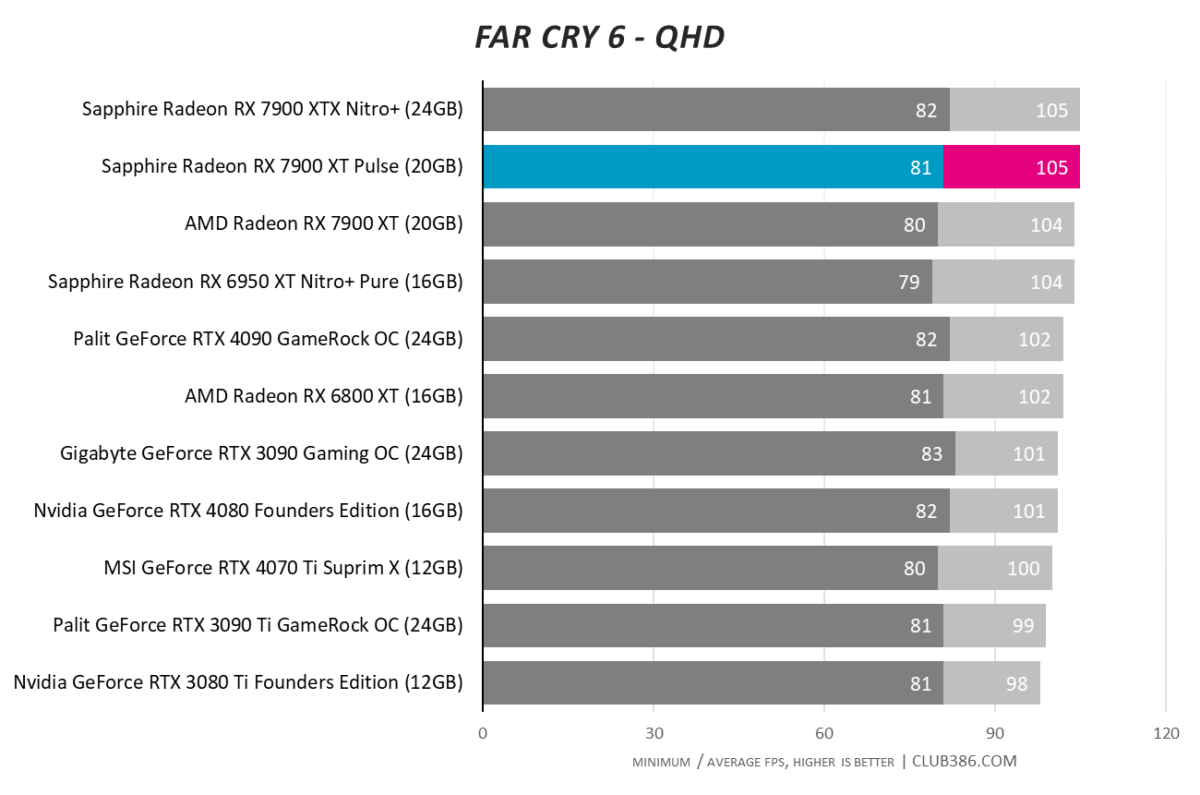
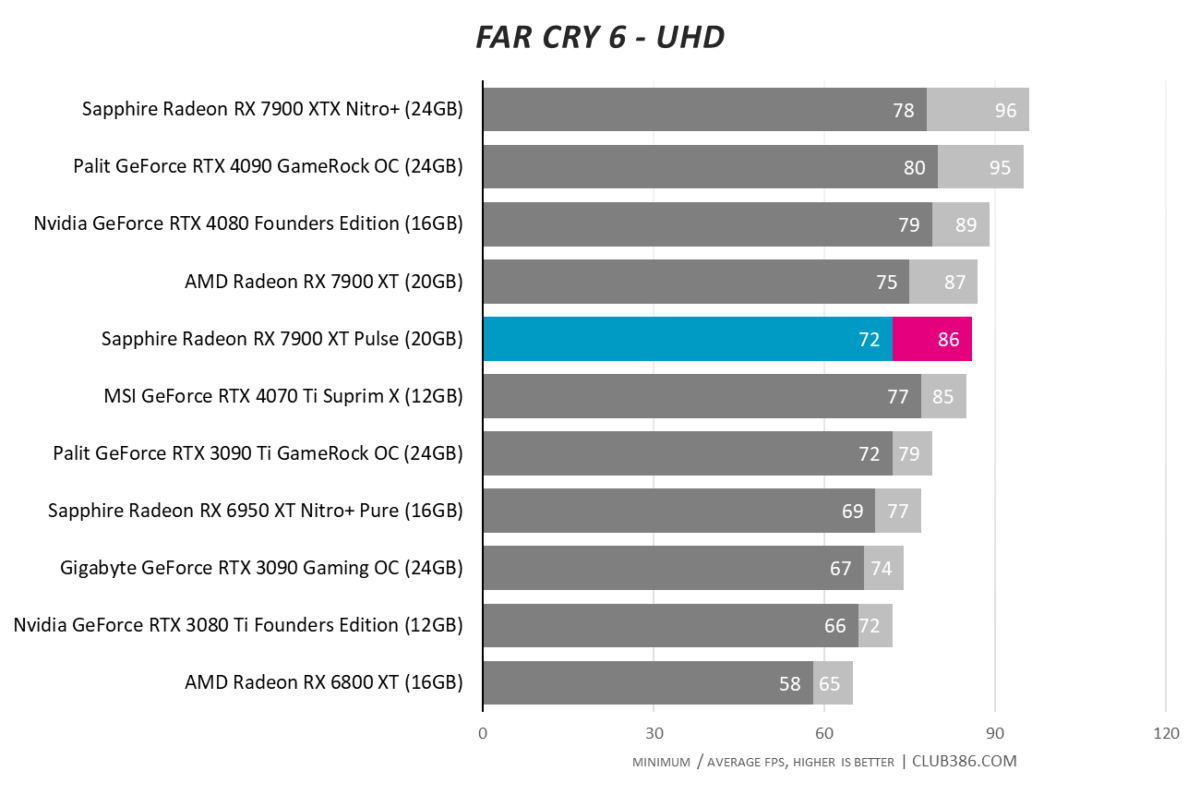
Limited by the subsystem more than the graphics card, 4K60 is wonderfully easy to achieve at the highest quality preset.
Specifications suggest the card has a 2,450MHz boost clock. That’s not true in the real world; logs show it actually runs at 2,550MHz most of the time, according to GPU-Z.
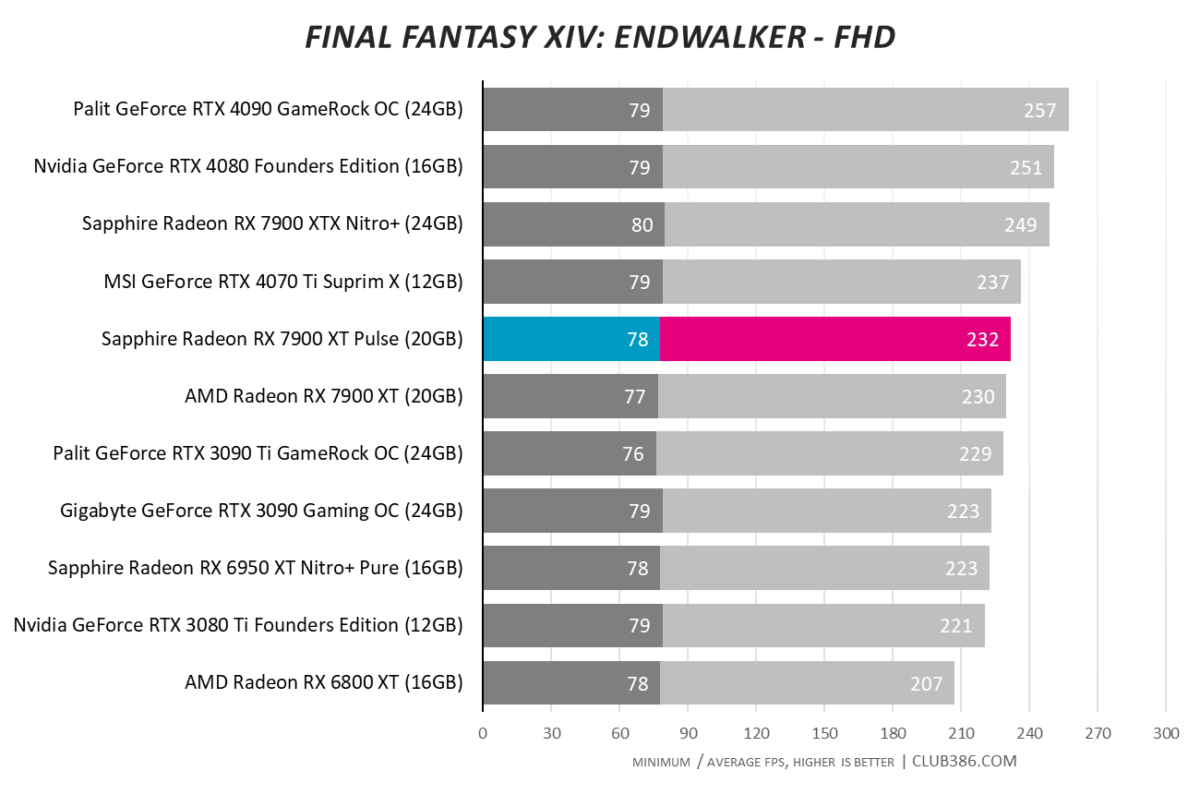
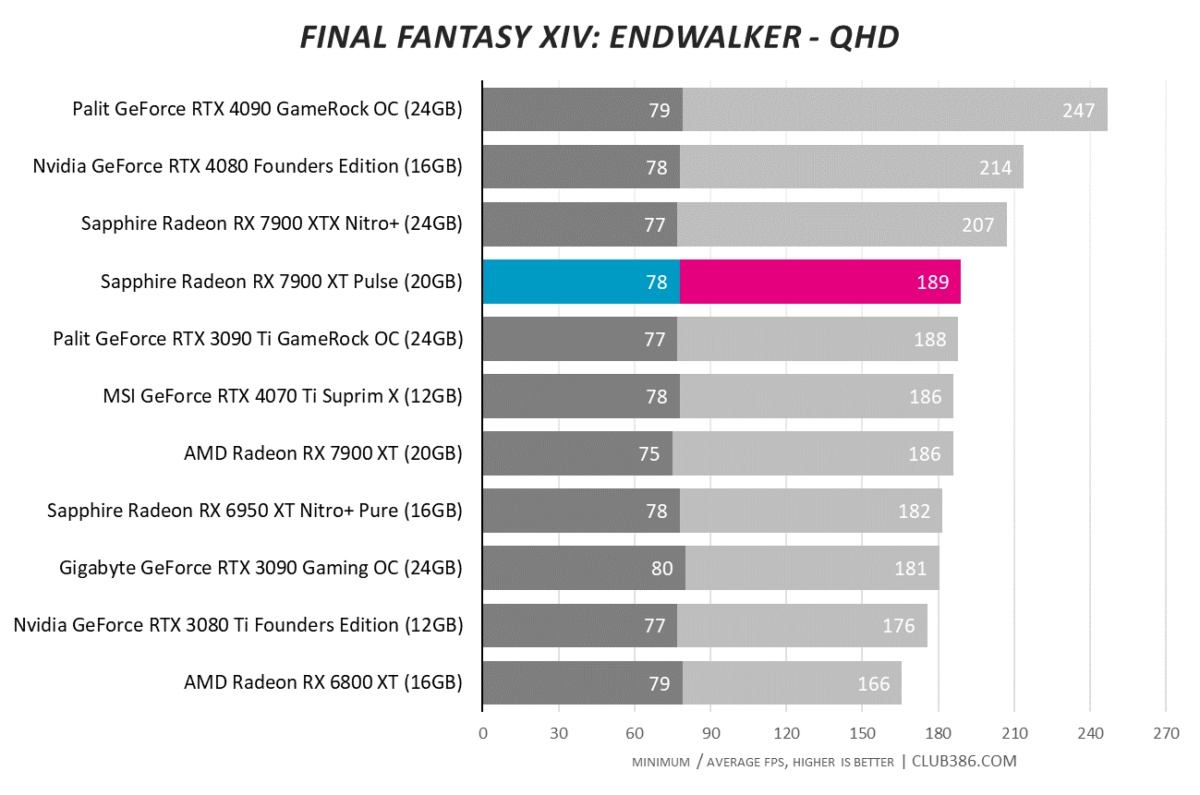
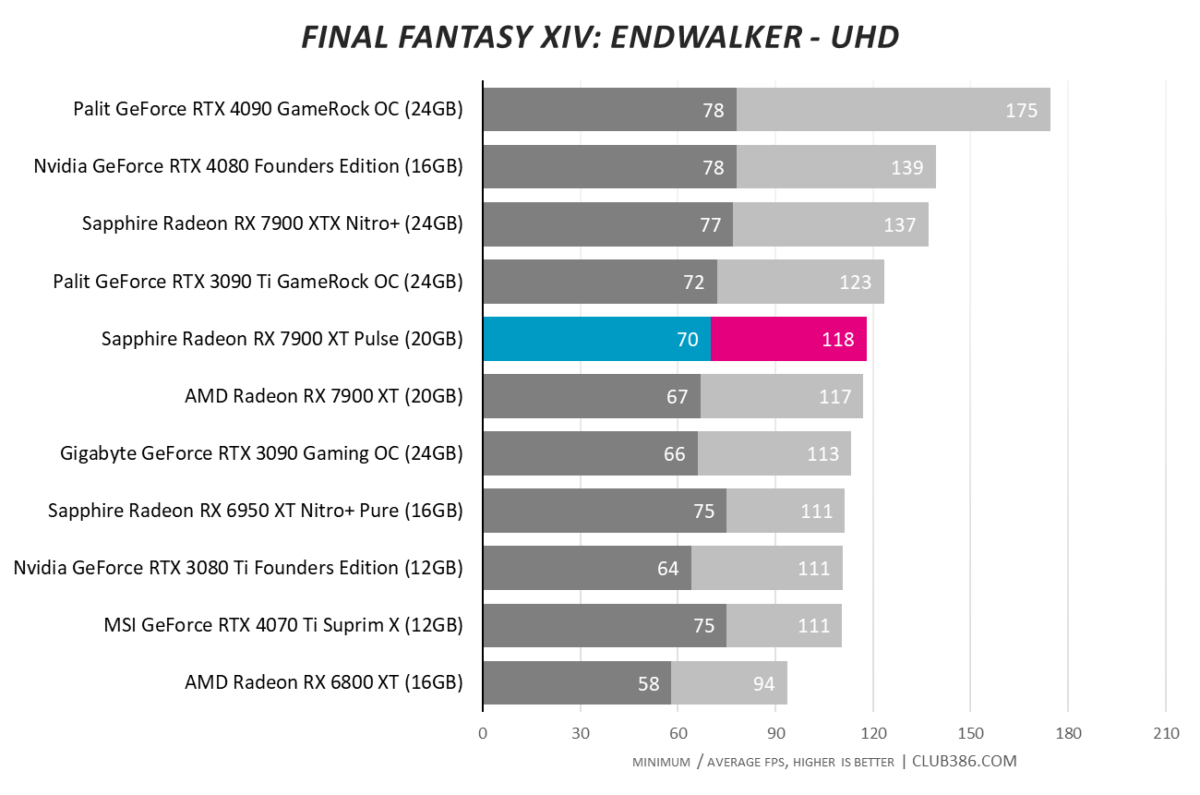
Did we say 4K60 was easy? Try 4K100 in older, popular titles.
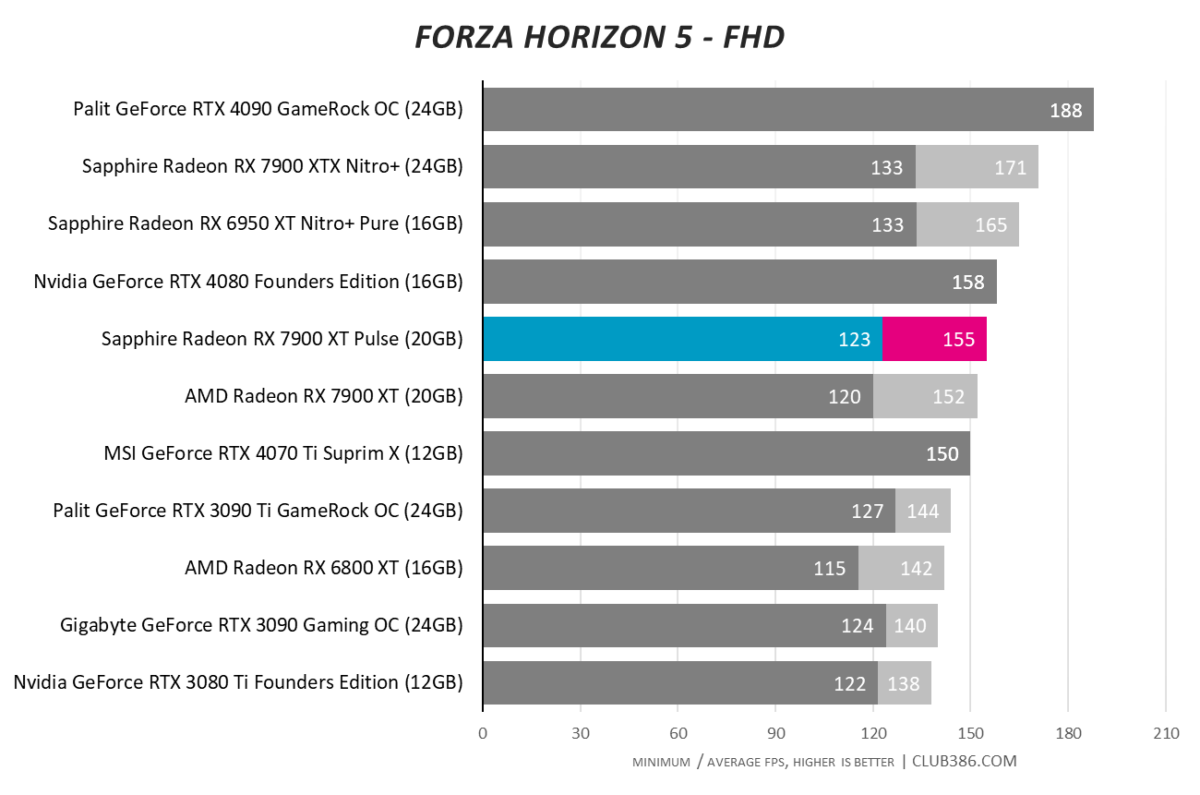
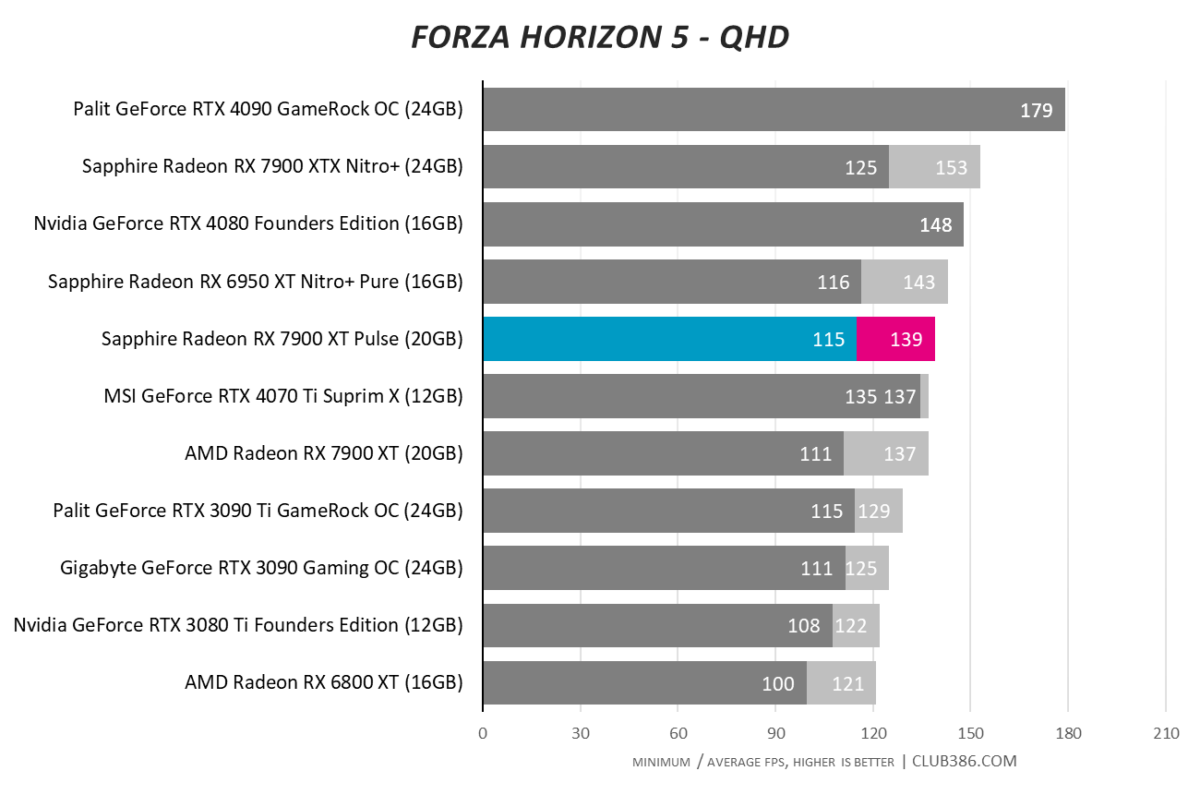
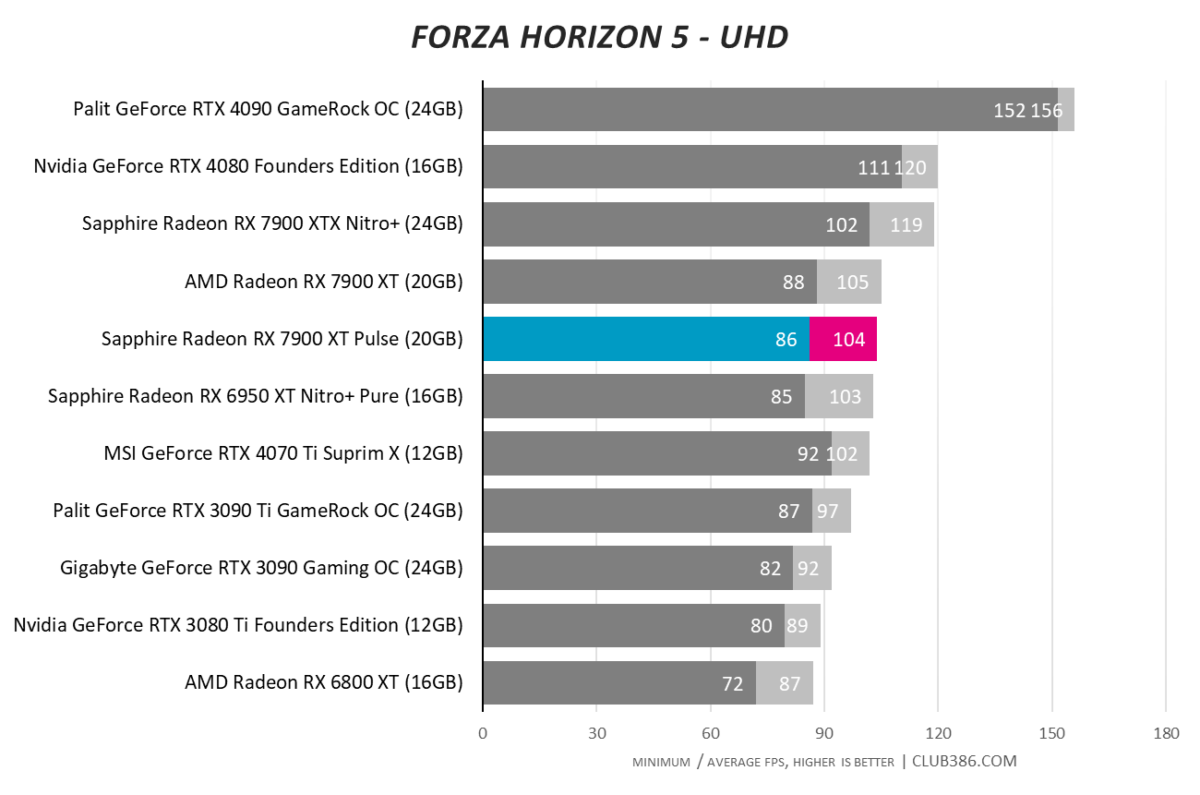
The most pleasant-looking racing game around, recent support for rival Nvidia’s DLSS 3 isn’t needed when 4K100 is achievable.
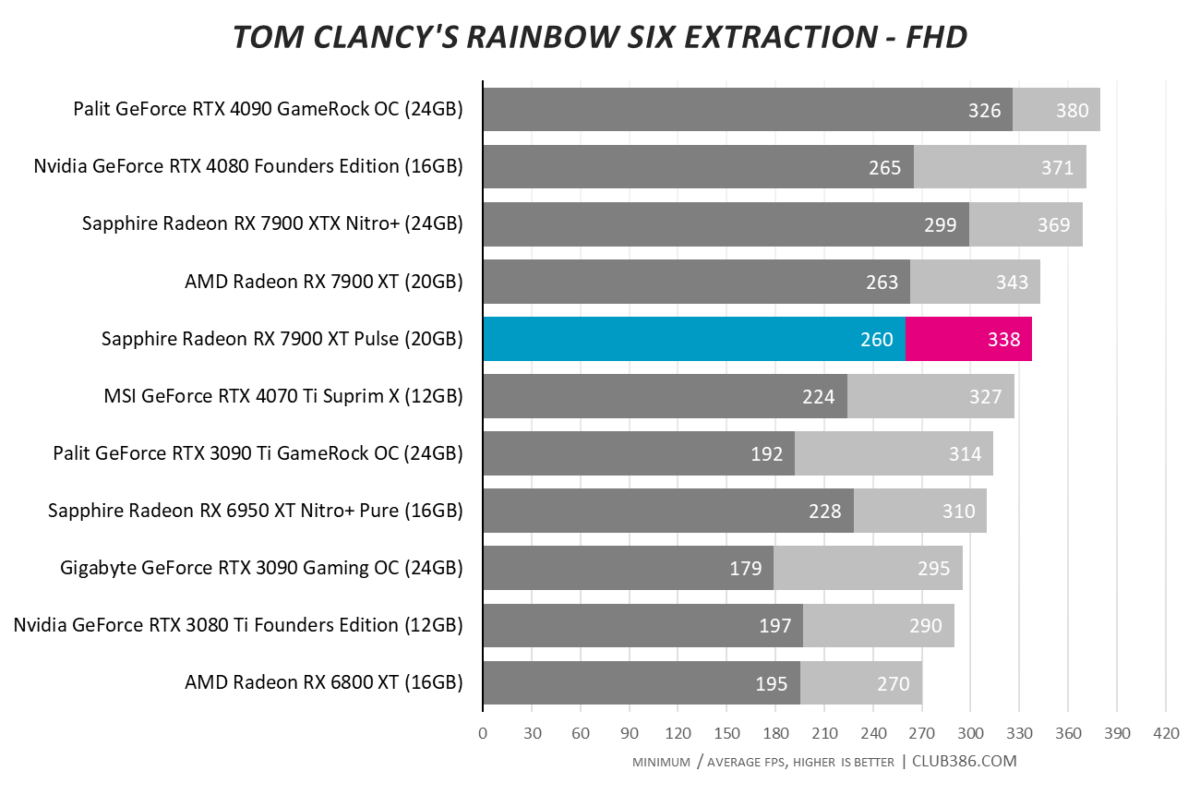
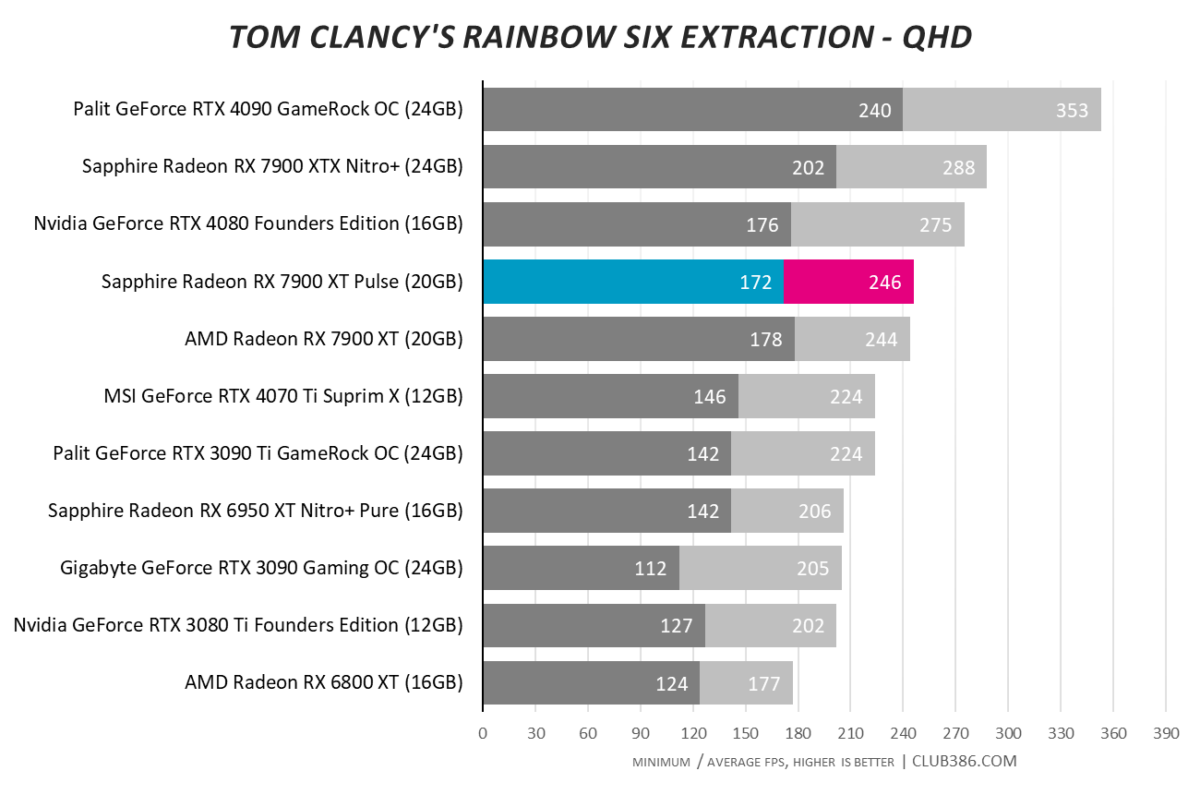
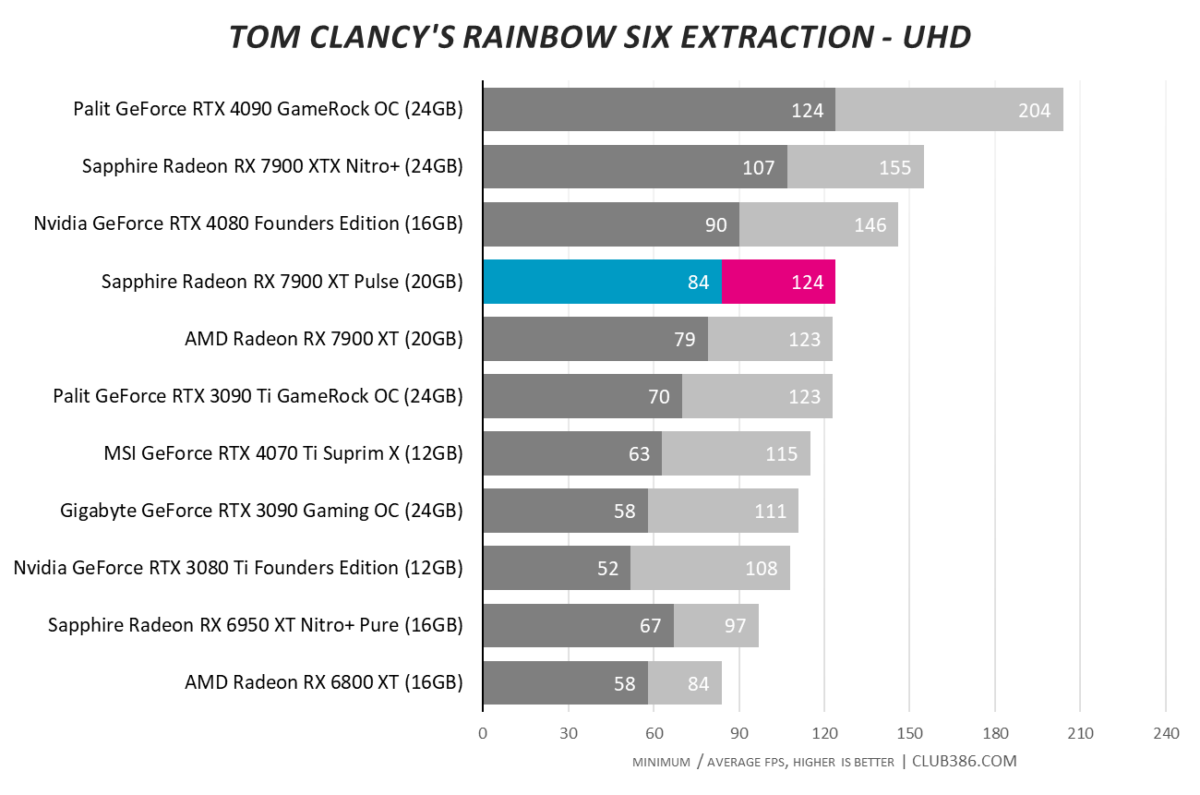
Talking about sky-high framerates, how does an average 124fps and minimum 84fps grab you. If you were in any doubt the Sapphire Radeon RX 7900 XT Pulse is a genuine premium solution, cast it aside.
Vitals
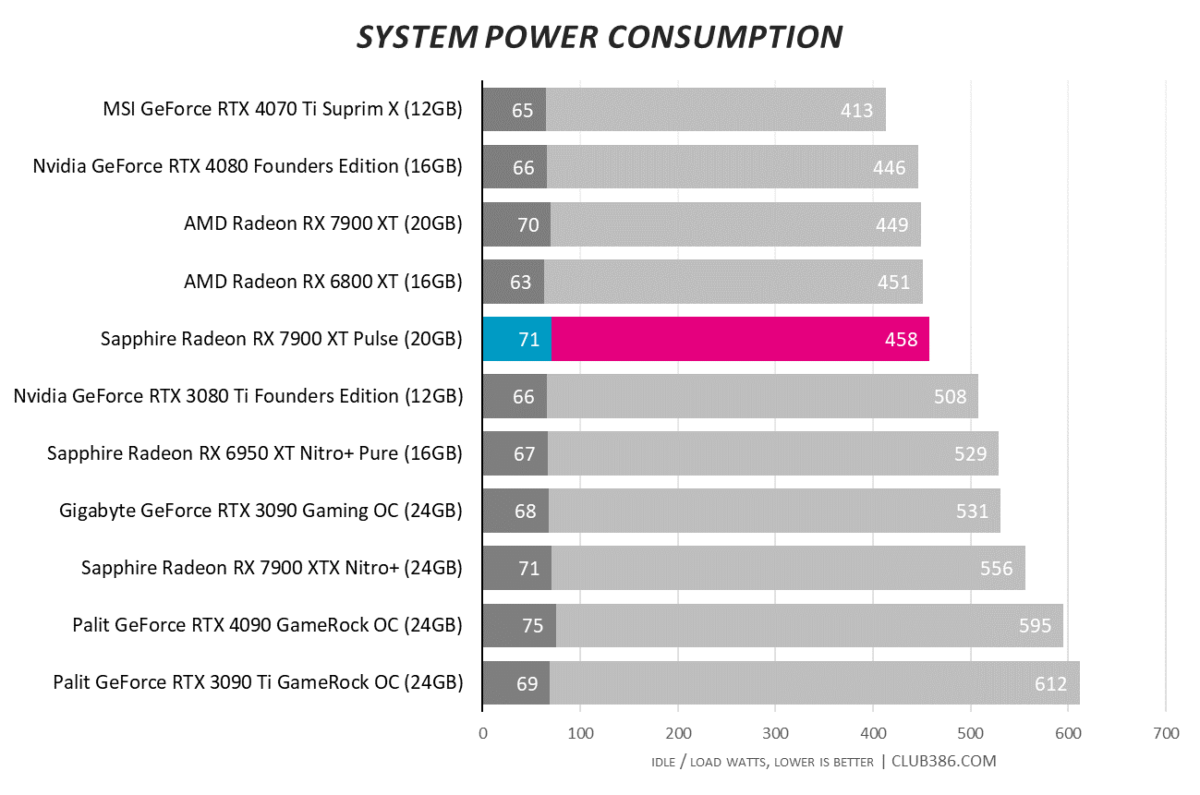
And don’t worry about having a 1,000W PSU, either, as peak power consumption isn’t too burdensome.
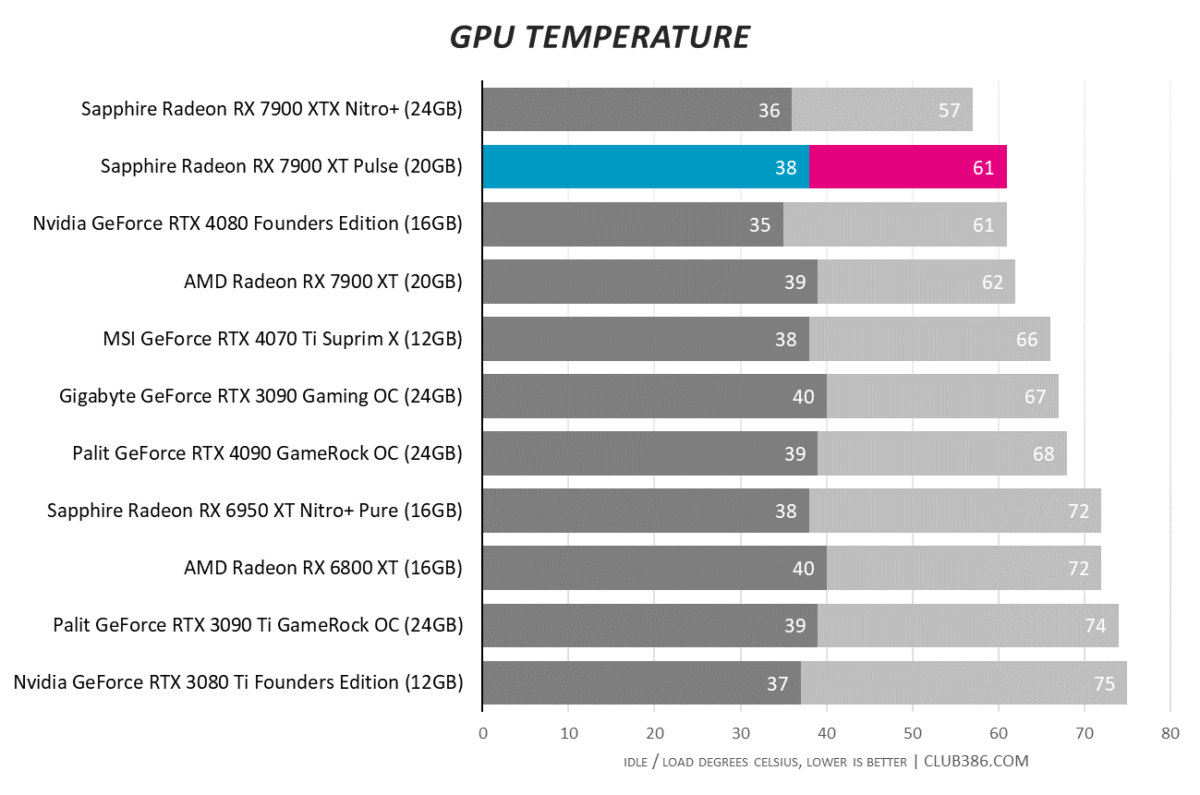
AMD’s MBA card showed RX 7900 XT is cooled easily. Sapphire has a few extra watts to deal with – 16, to be exact – and does a great job in this department. It’s no coincidence both Sapphire cards lead the charts.
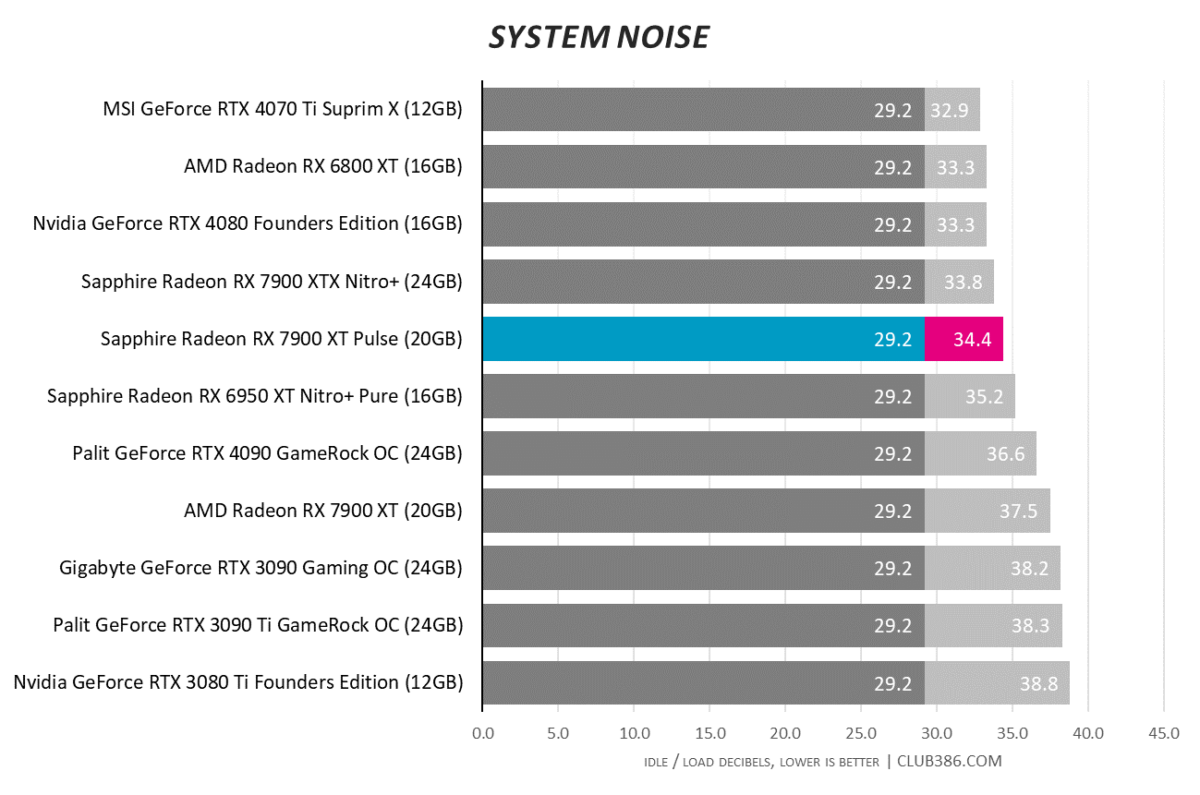
Yet temperature is only one side of the coin. It’s no good having a cool card that mimics a wailing banshee. Pulse’s three fans average around 1,350RPM at full load. While noticeable, they aren’t distracting, even in a quiet build.
Overclocking
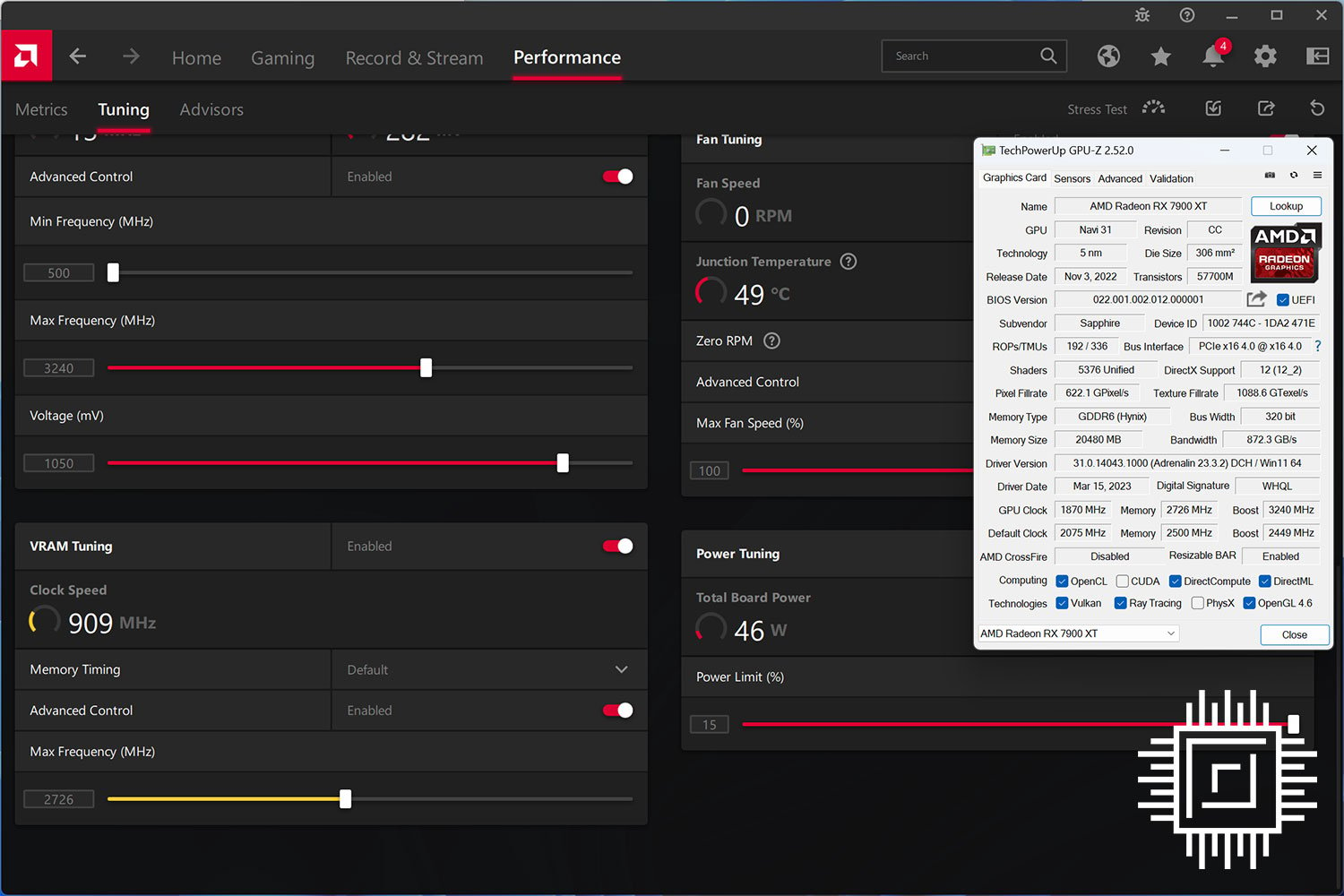
Overclocking the latest generation of Radeon cards is not as straightforward as it ought to be. Our strategy is to increase the power target by the maximum permissible 15 per cent, drop core voltage so the GPU has room to install higher frequencies, and then raise memory and engine clocks.
| Game/application | Default result | Overclocked score/fps | Percentage increase |
|---|---|---|---|
| 3DMark Time Spy Extreme | 12,097 marks | 12,512 marks | 3.43 per cent |
| AC Valhalla UHD | 91/42fps | 97/44fps | 6.59 per cent |
| Forza 5 UHD | 104/86 | 111/90 | 6.73 per cent |
It’s the memory increase which makes the most difference at a GPU-starved UHD resolution. Nice bumps.
Conclusion
AMD changed the design game by introducing chiplet-based GPUs late last year. At that time, Radeon RX 7900 XT felt like the poorer cousin of XTX, with pricing not making sense. Fast forward to today and things have changed for the better as aftermarket cards are available at or below MSRP.
Sapphire spies opportunity with Pulse. Priced at £850 / $895, extraneous features are removed to leave a capable solution that’s cool, quiet, and does exactly what it says on the tin.
Offering a modicum of extra performance over the MBA card in most games, it overclocks relatively well, too. If premium Radeon fills your gaming needs, the Sapphire Radeon RX 7900 XT Pulse is definitely one to shortlist.
Verdict: Doing most things right, Sapphire builds yet another impressive card.

